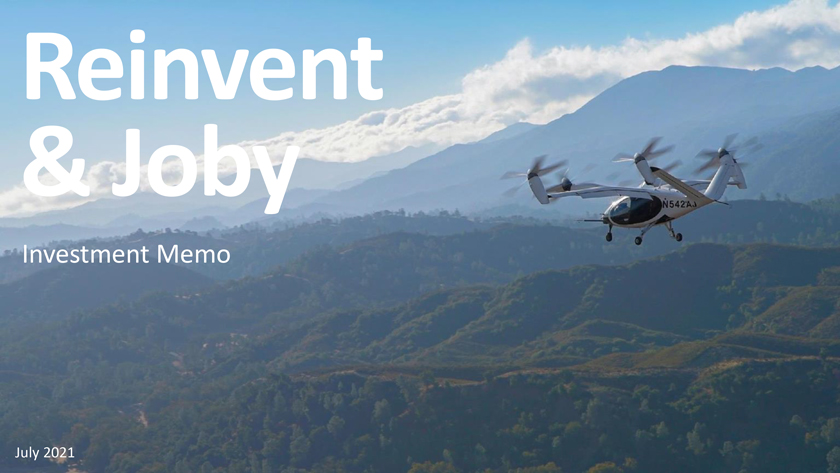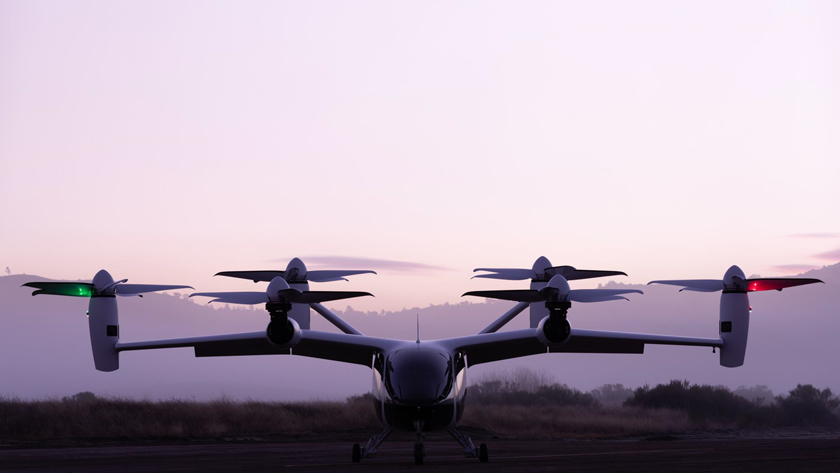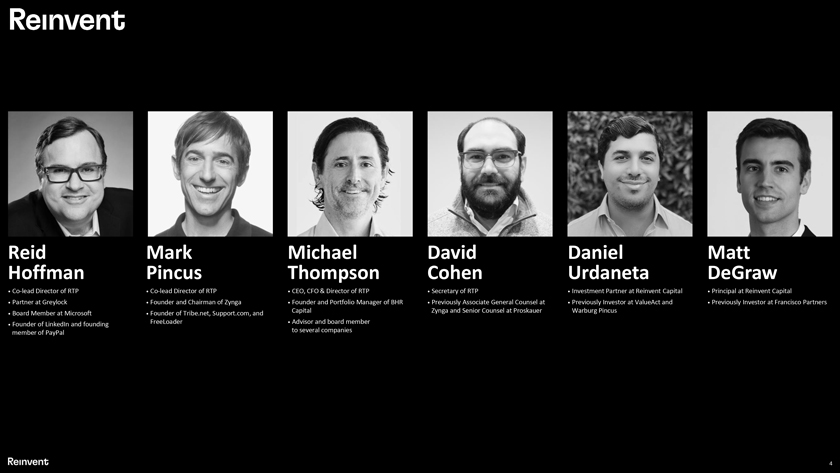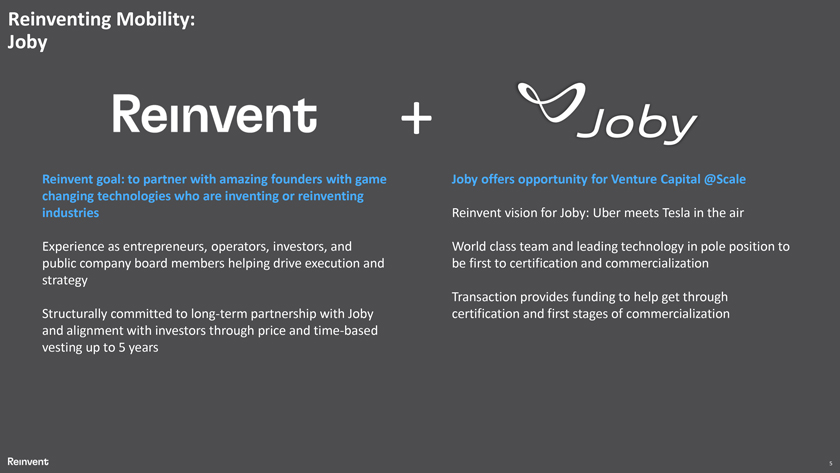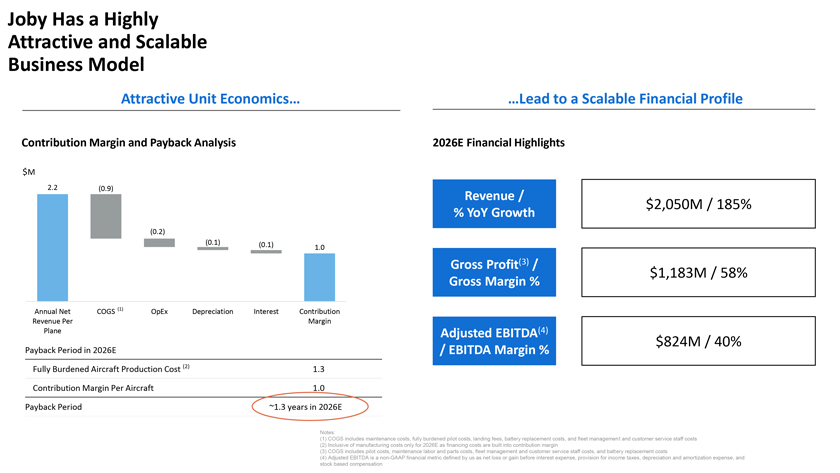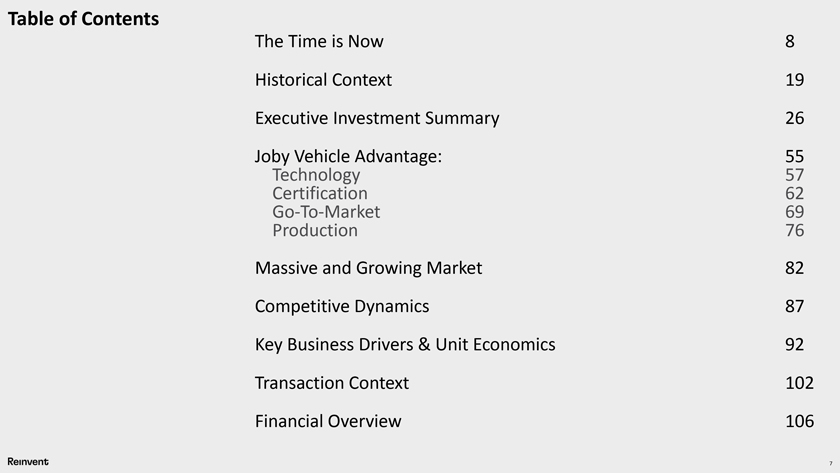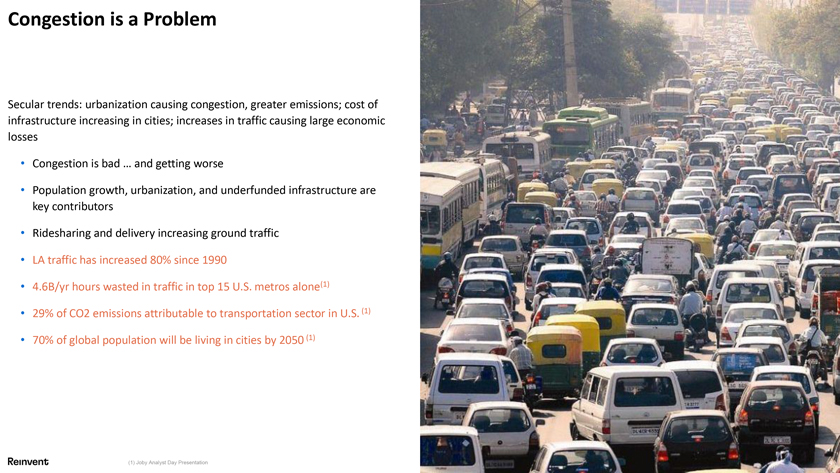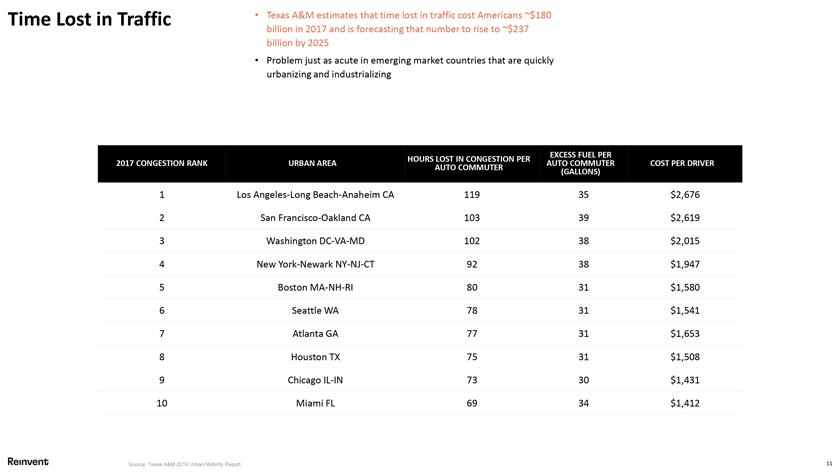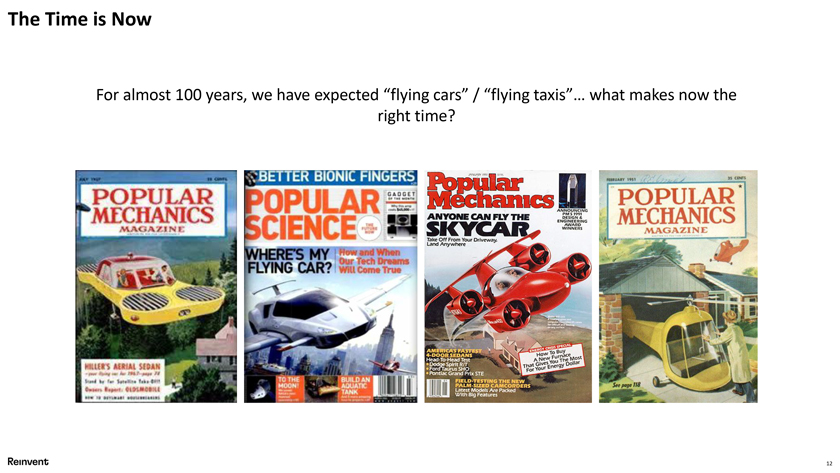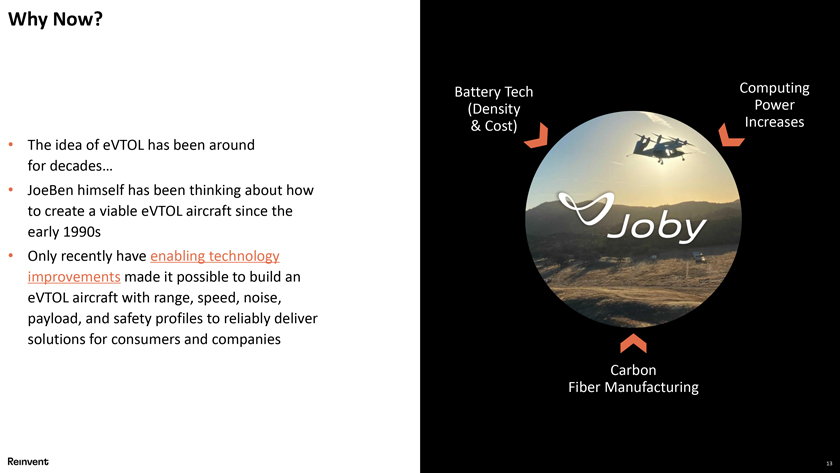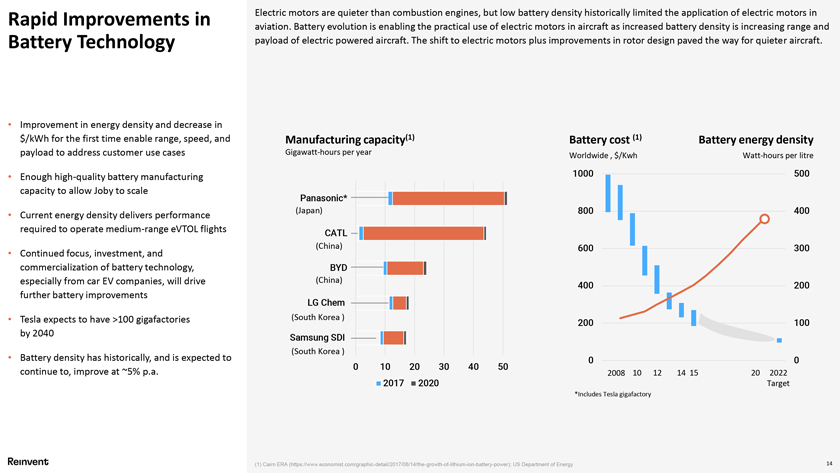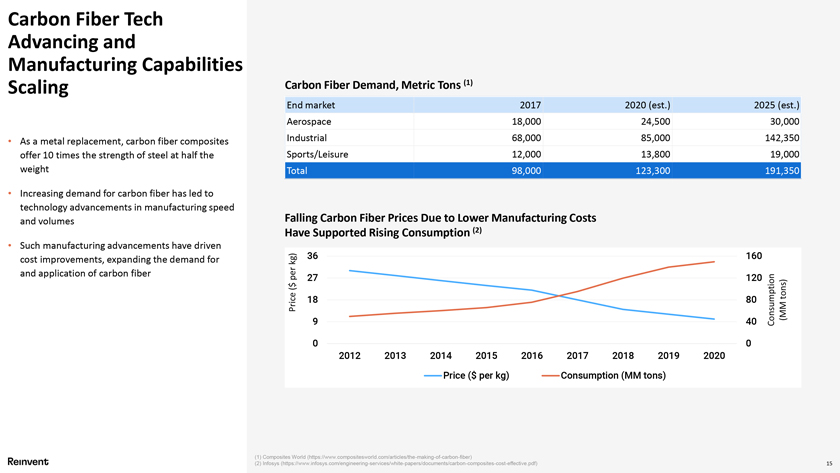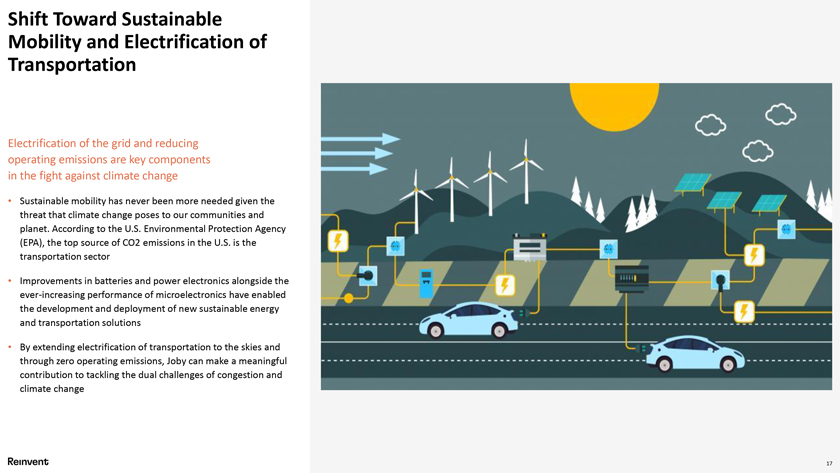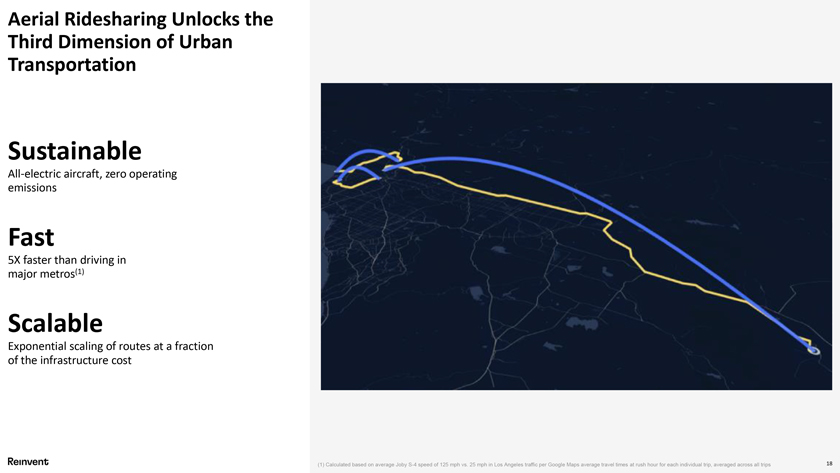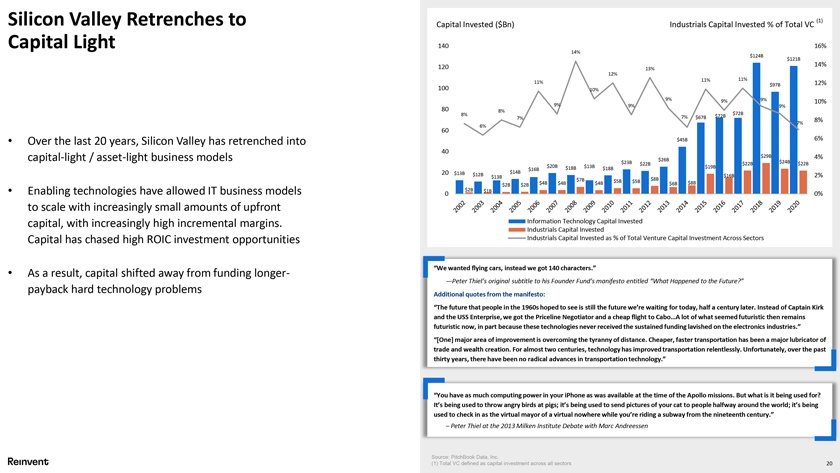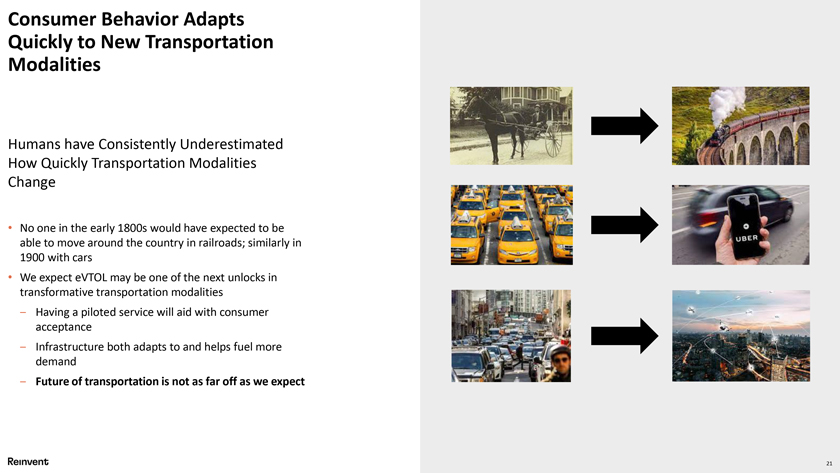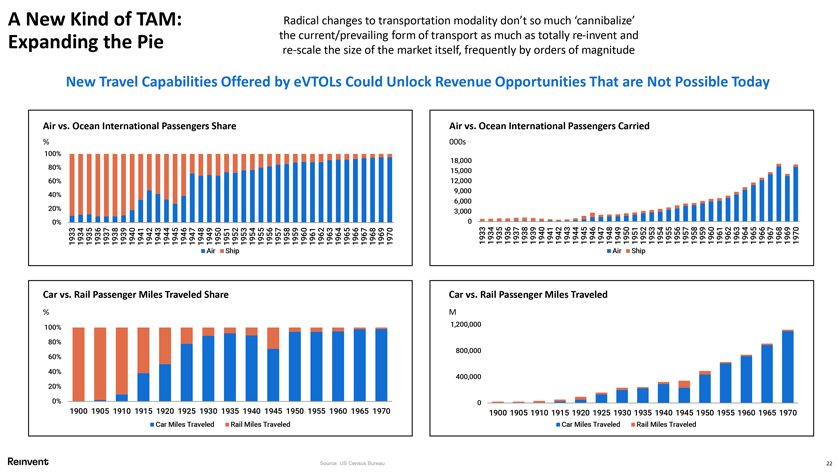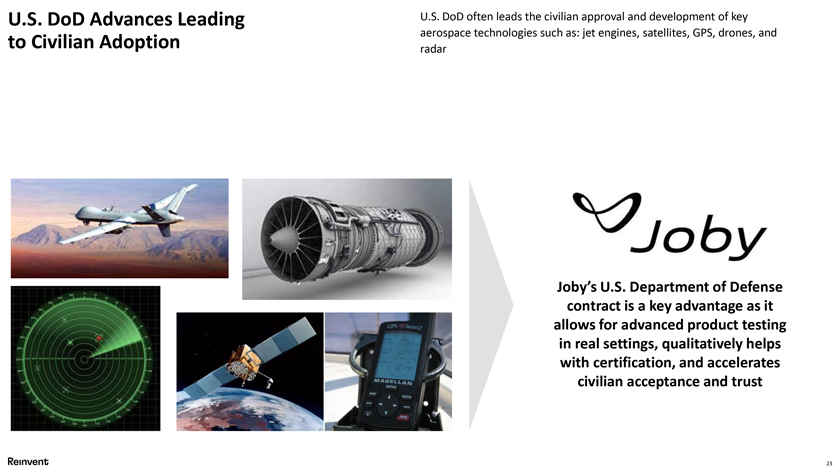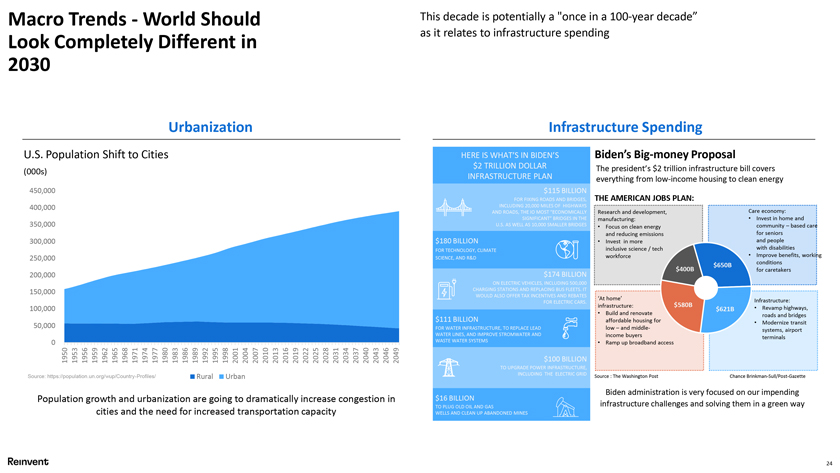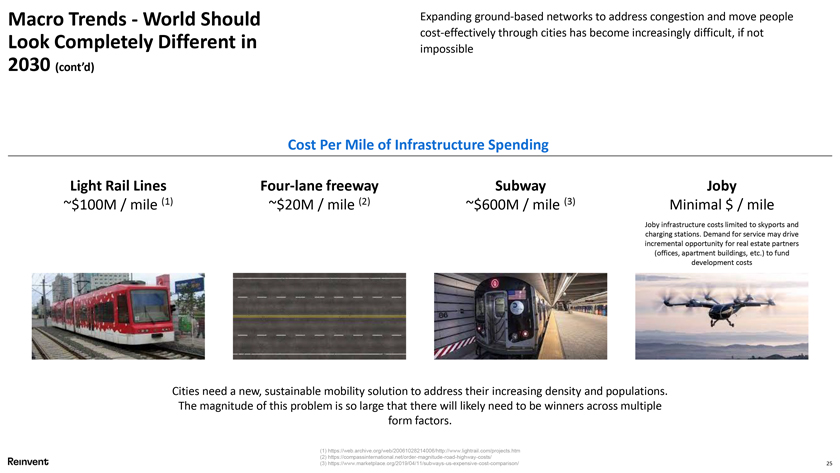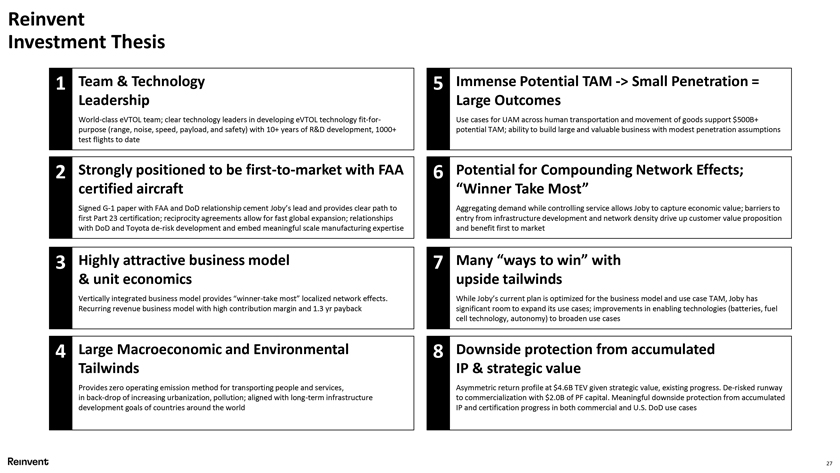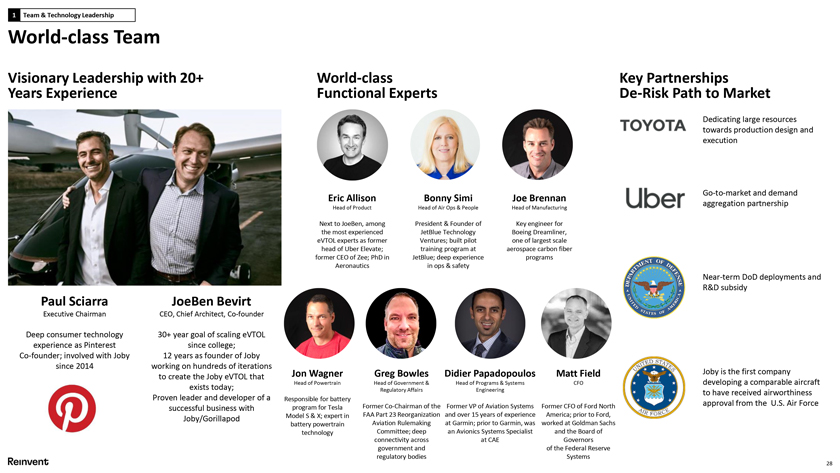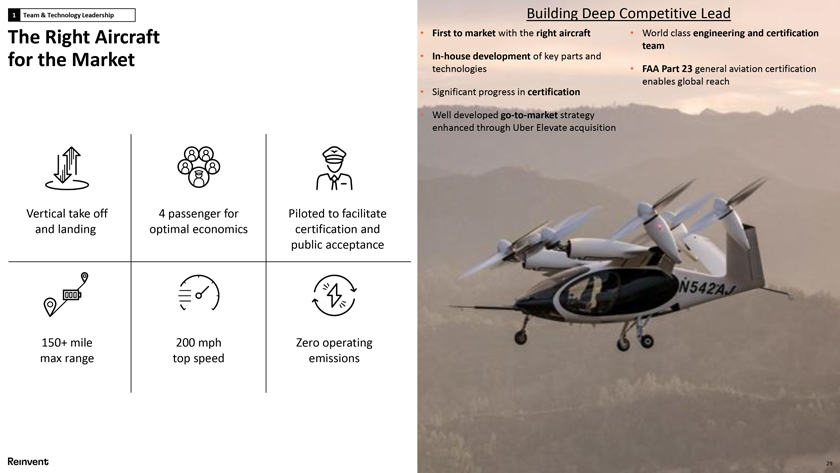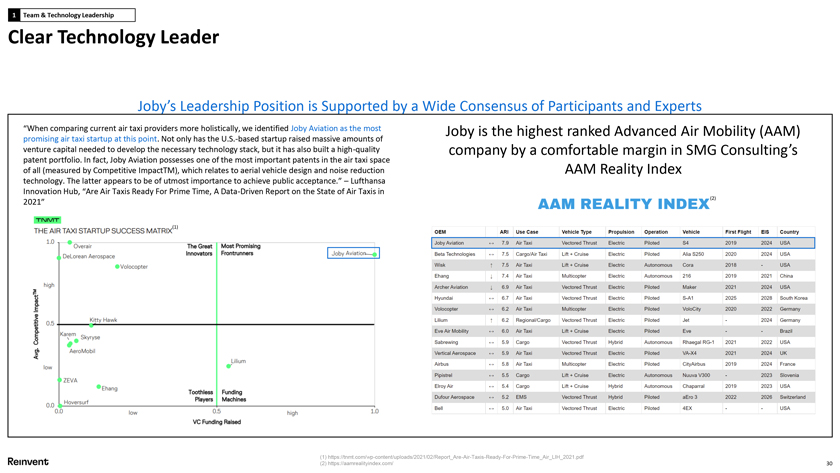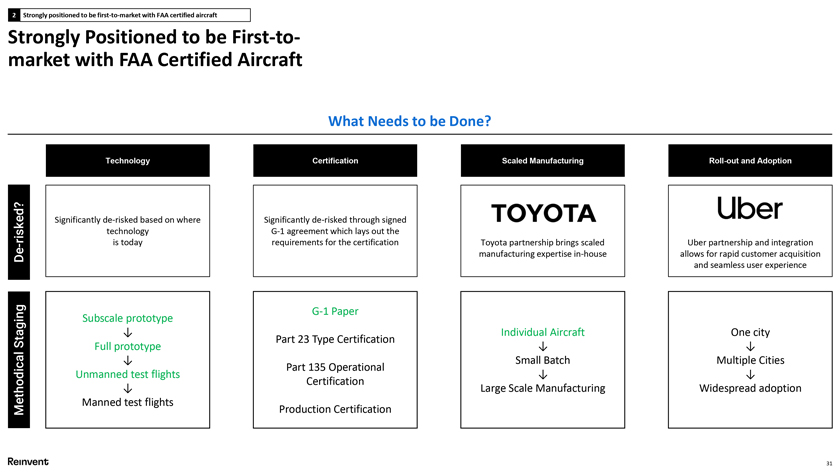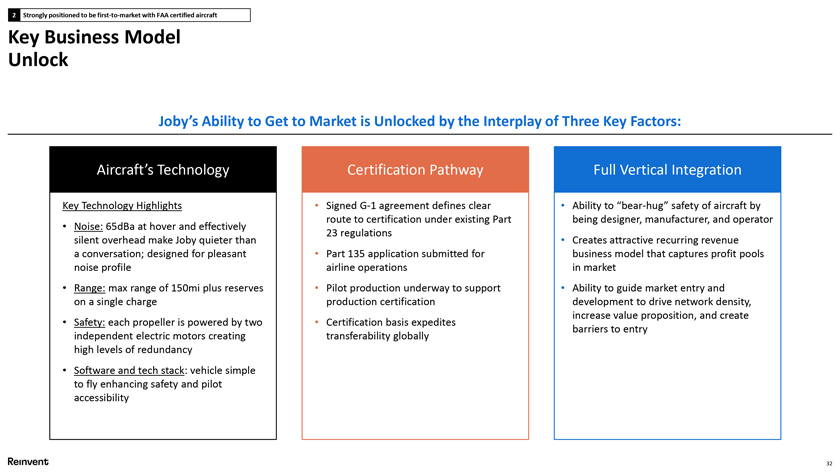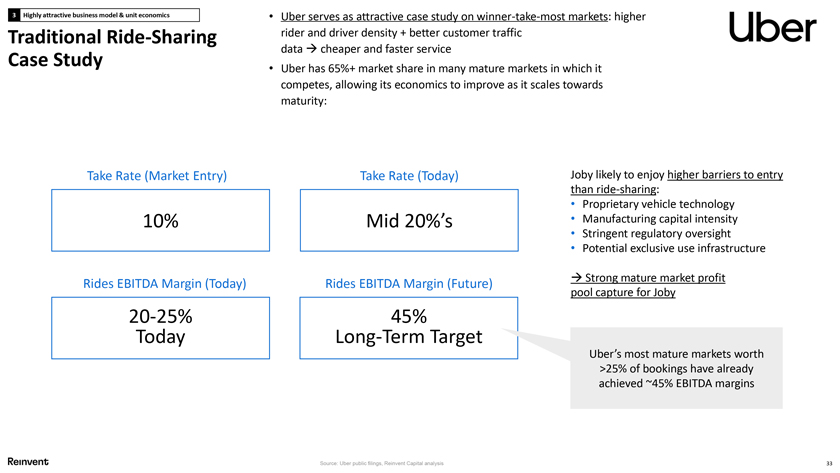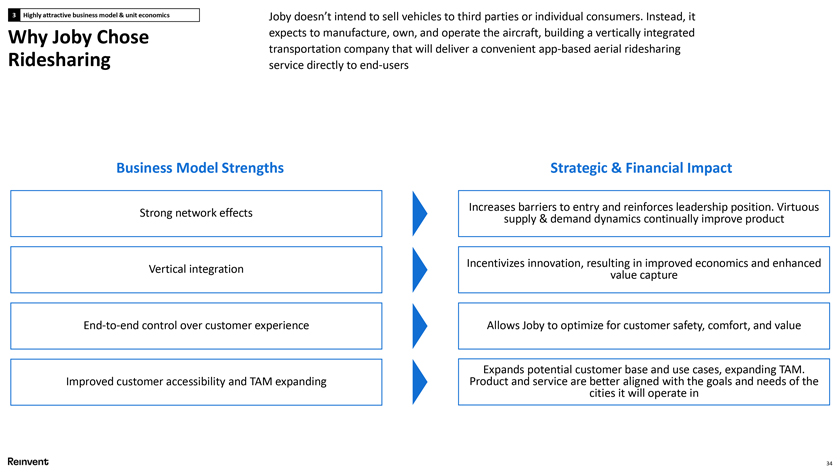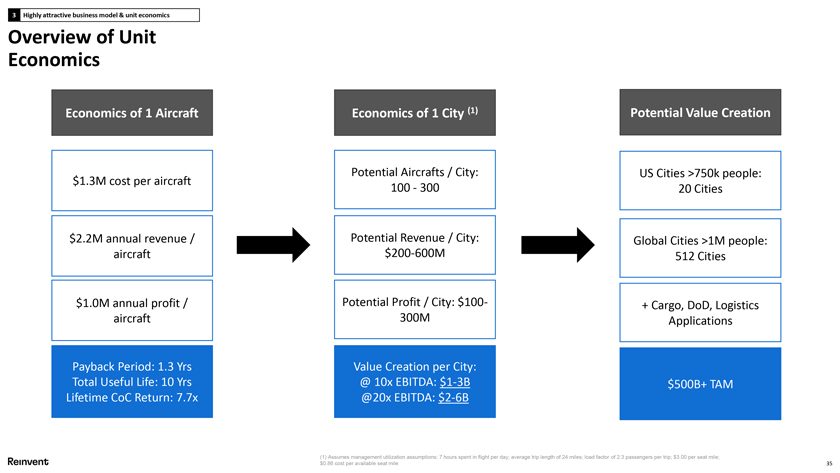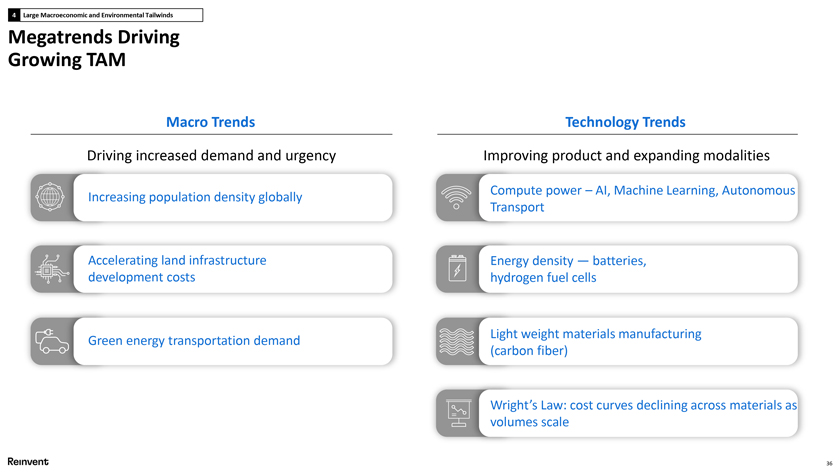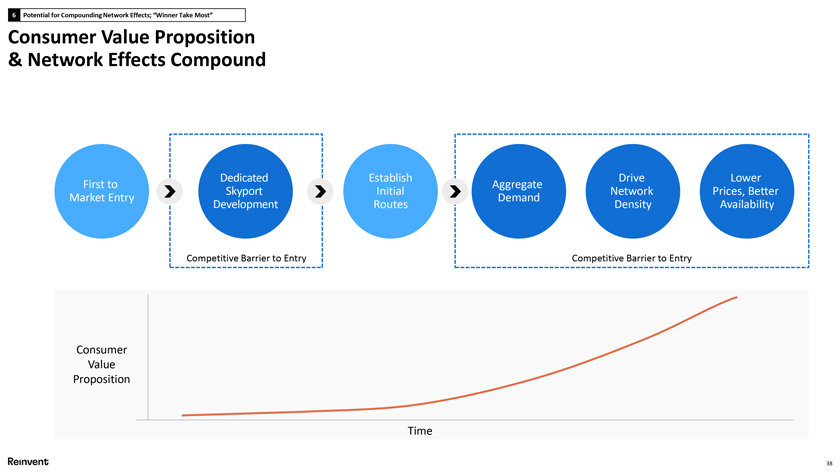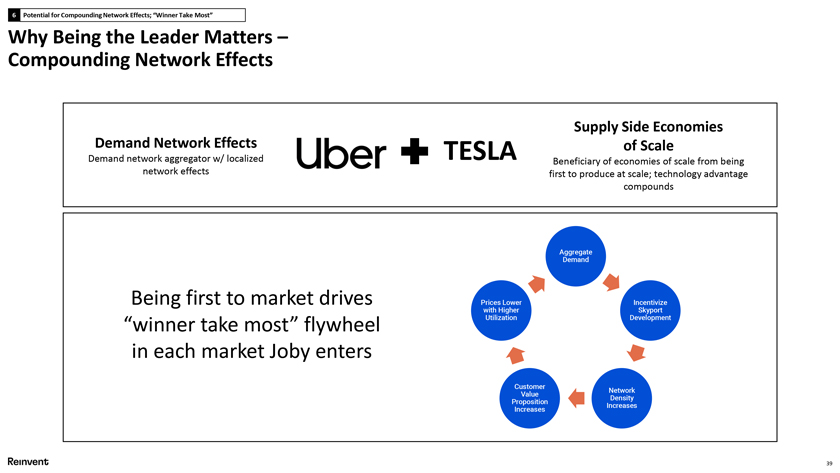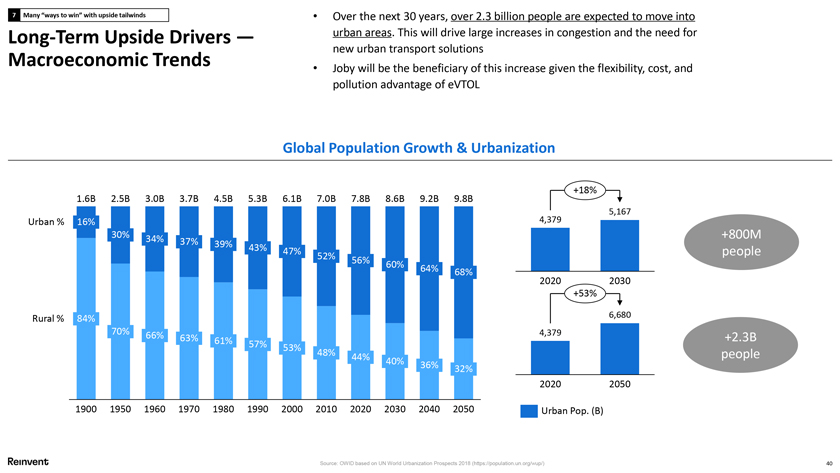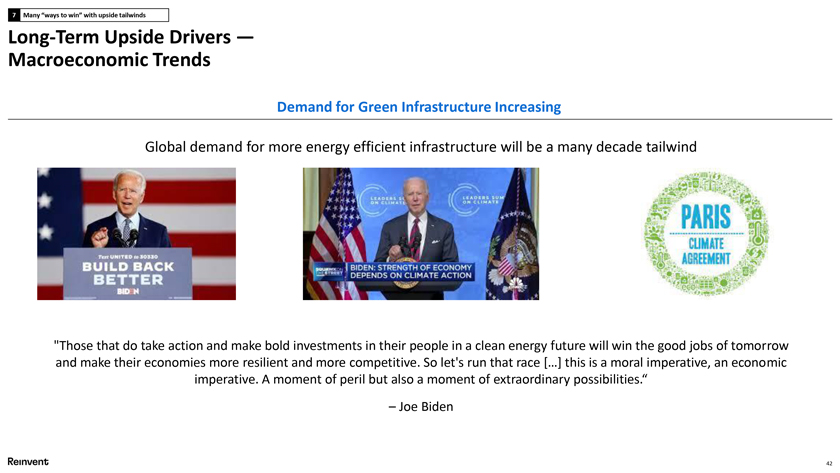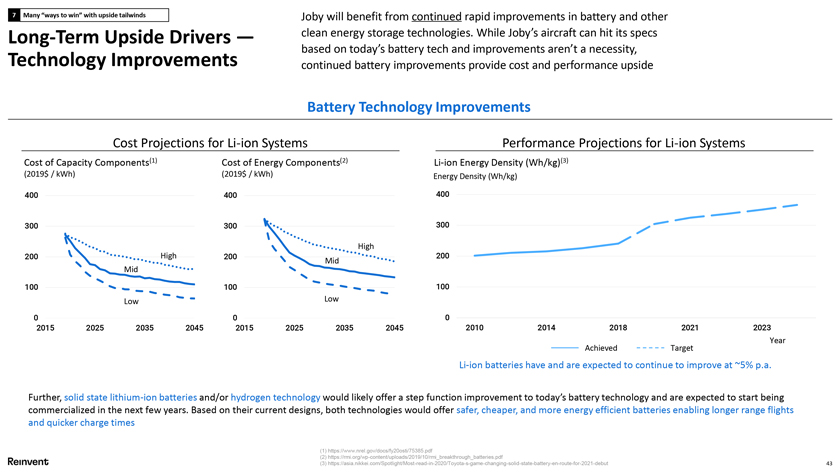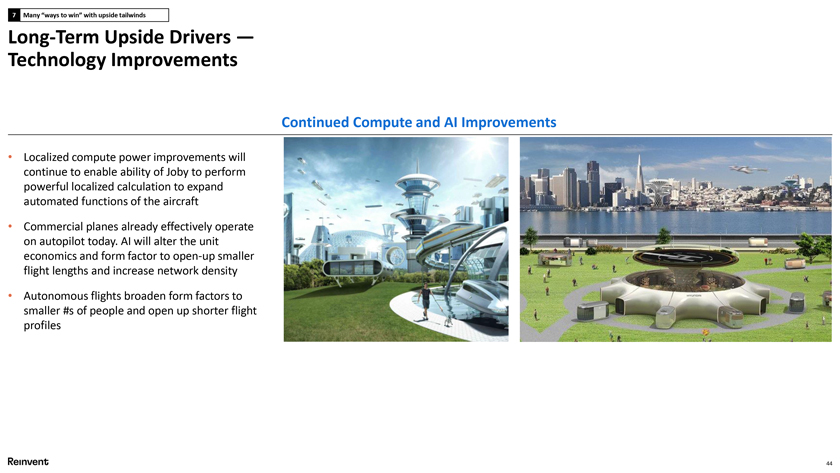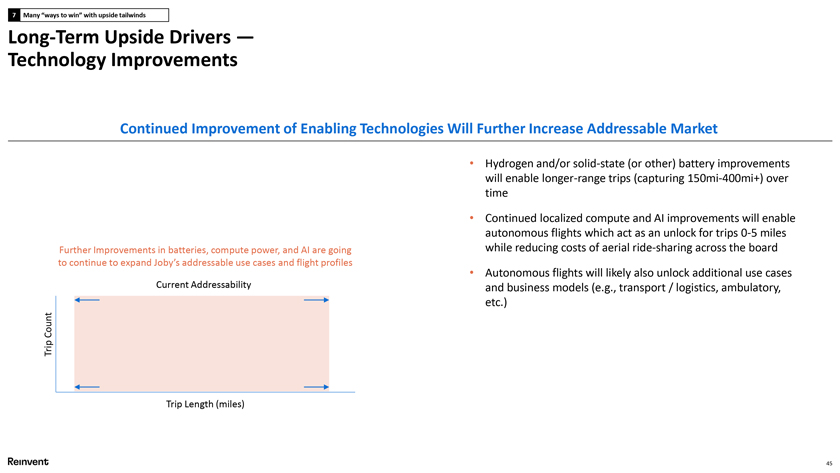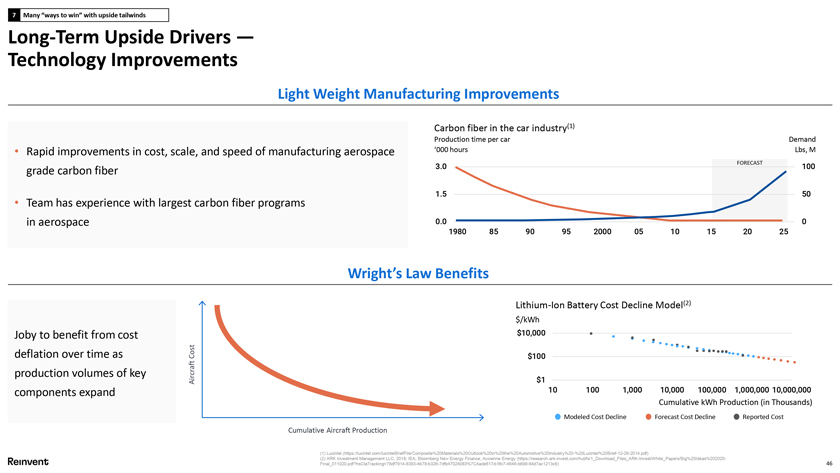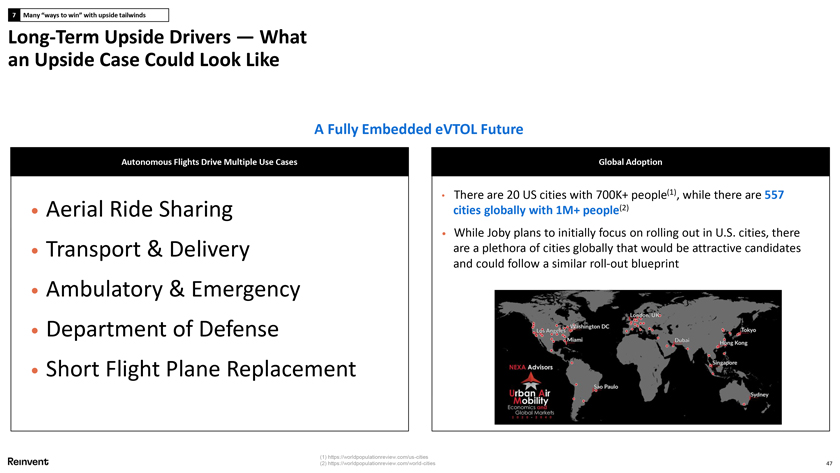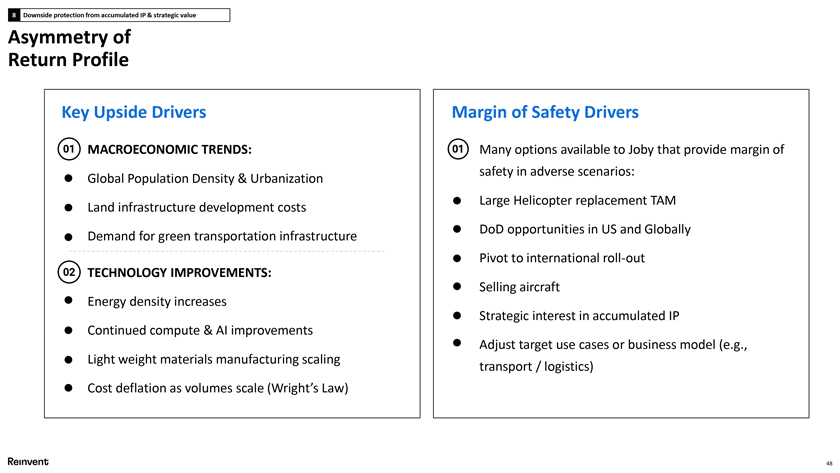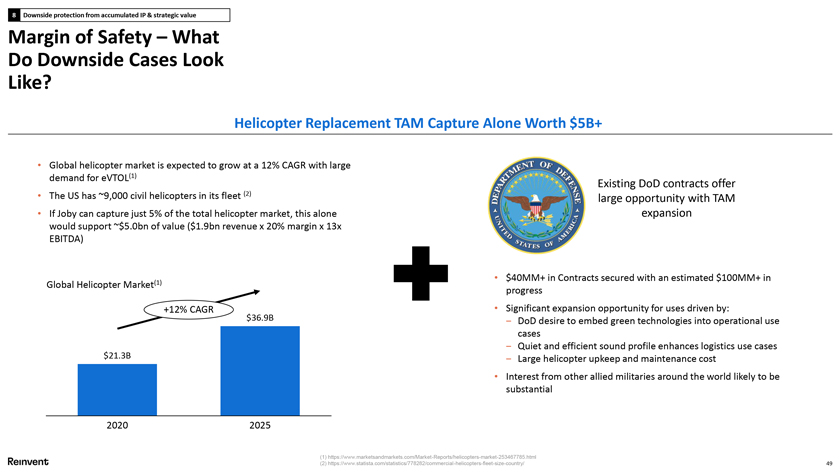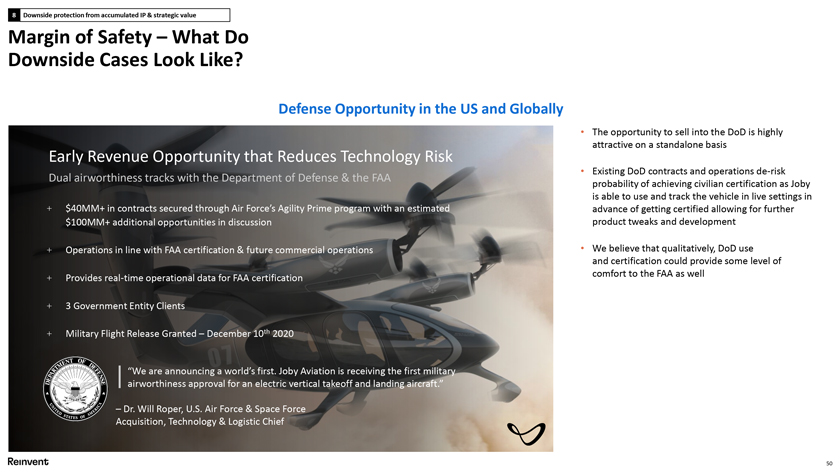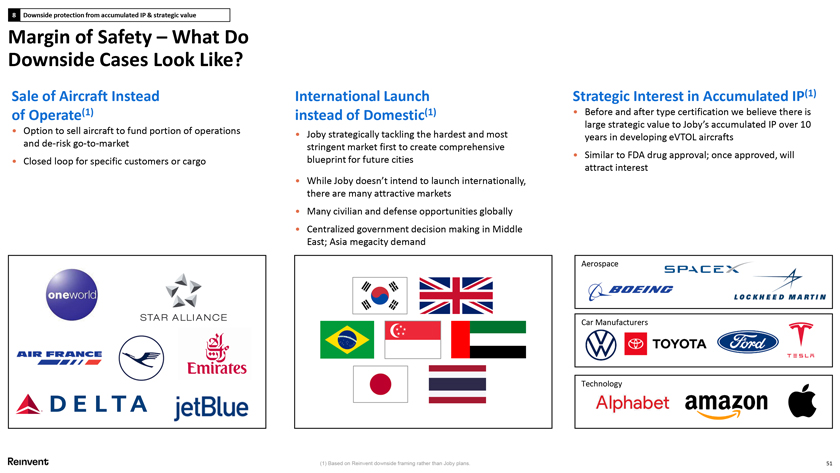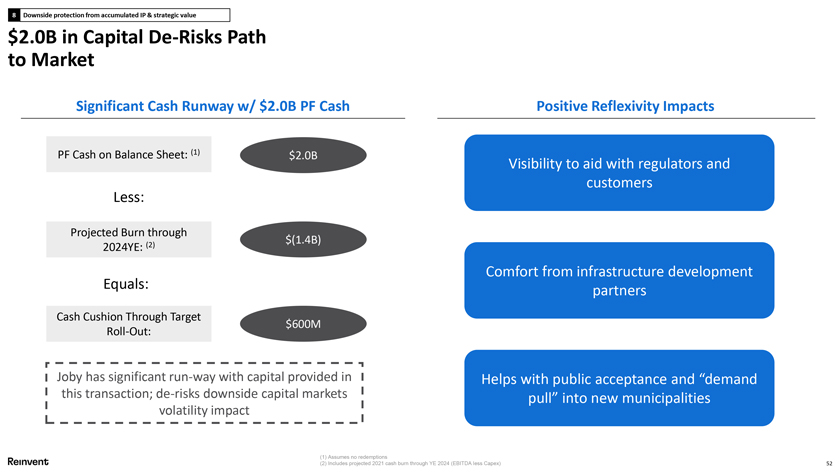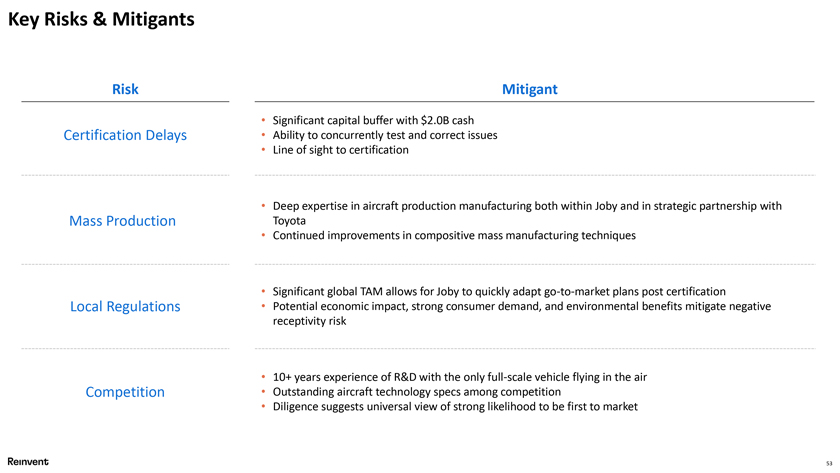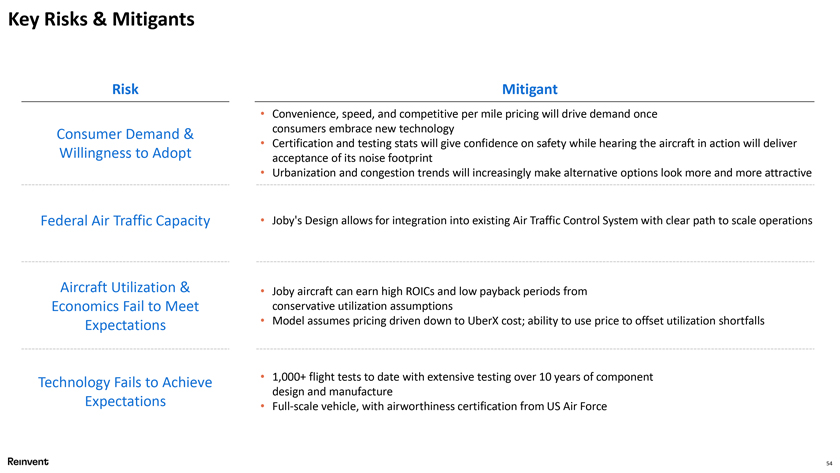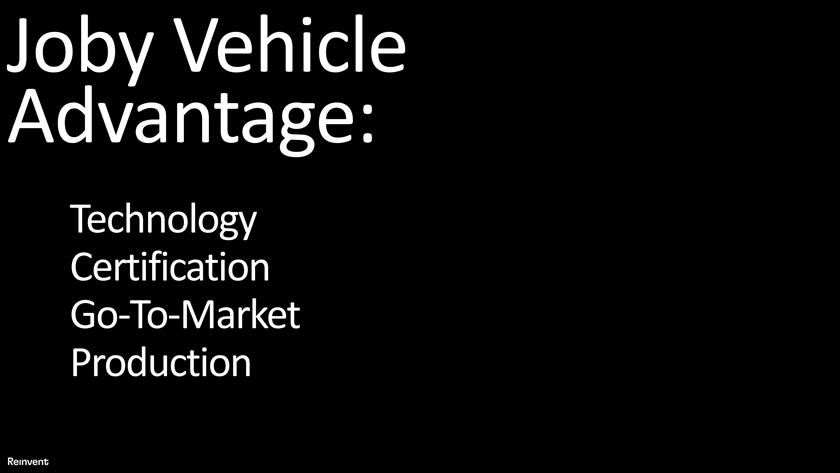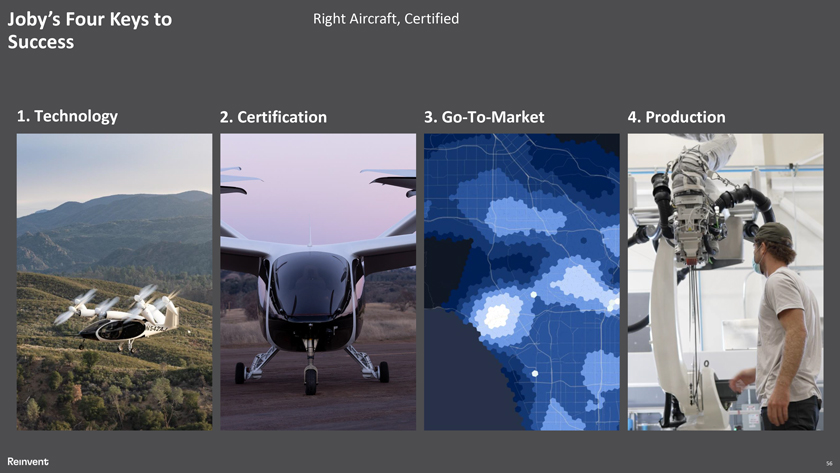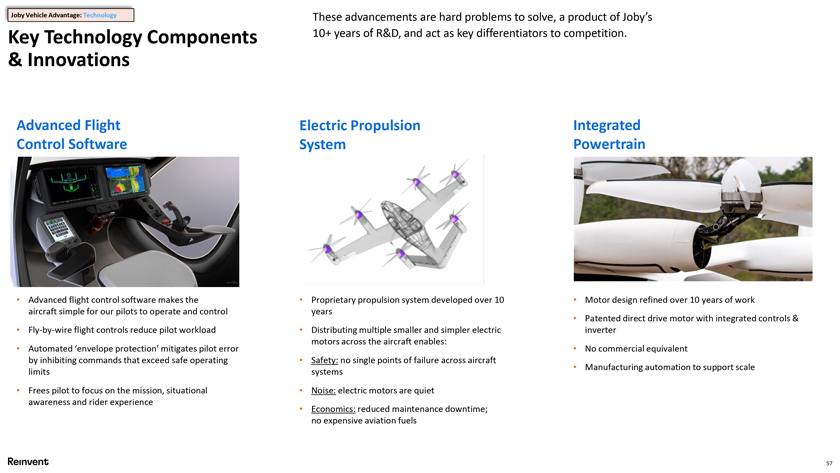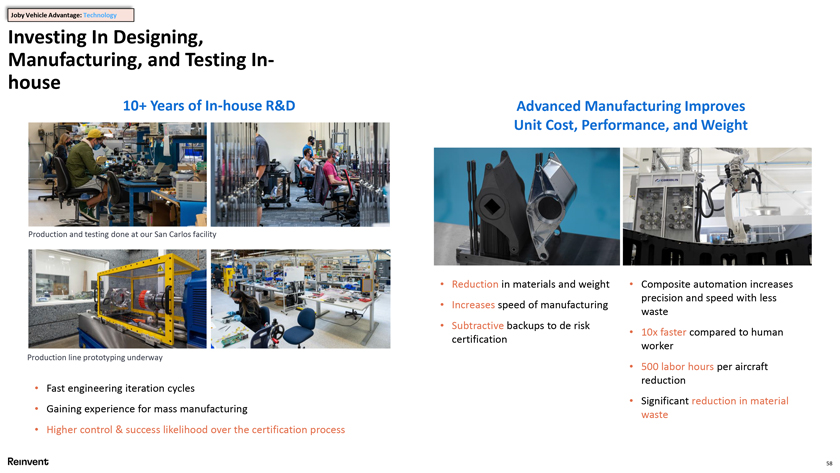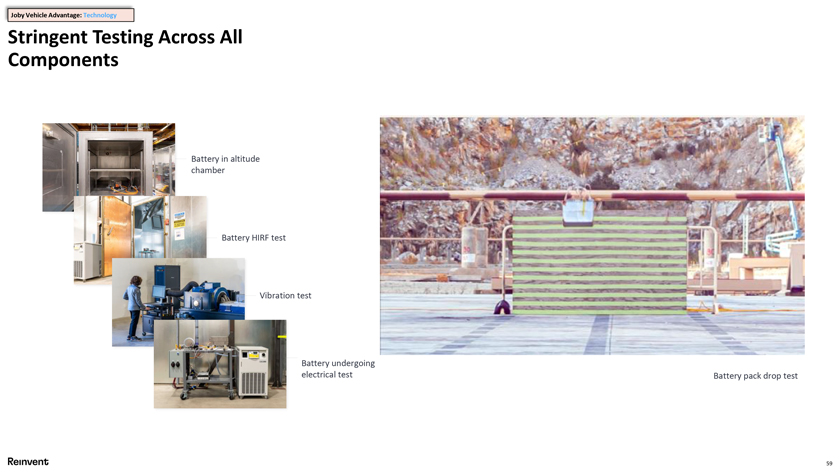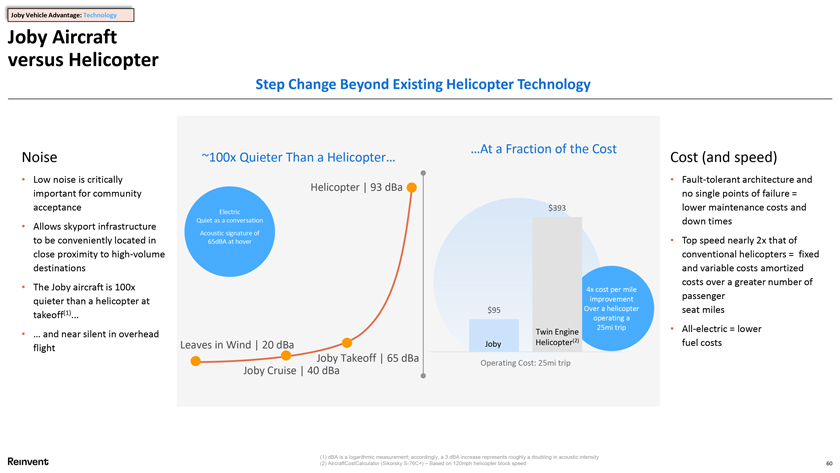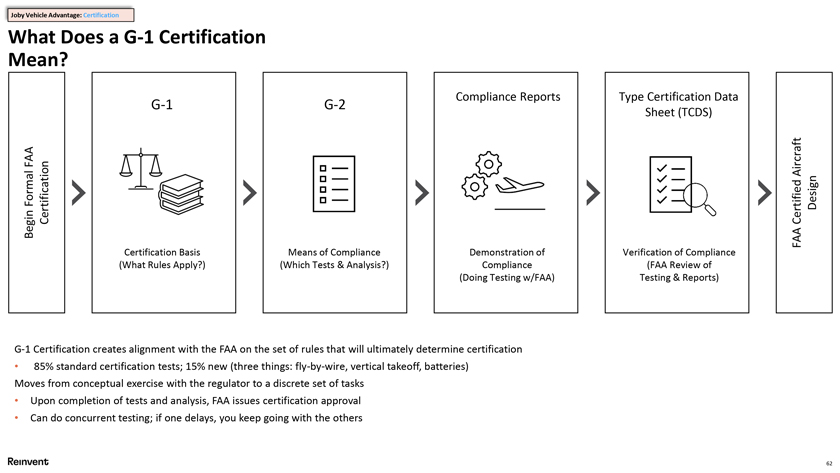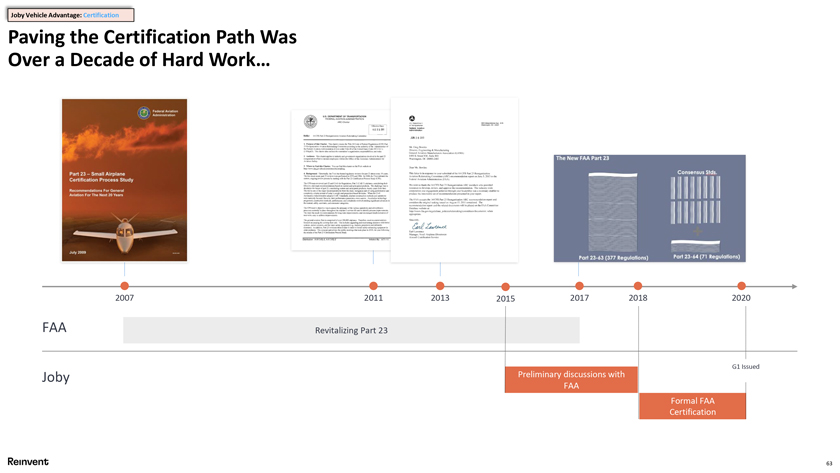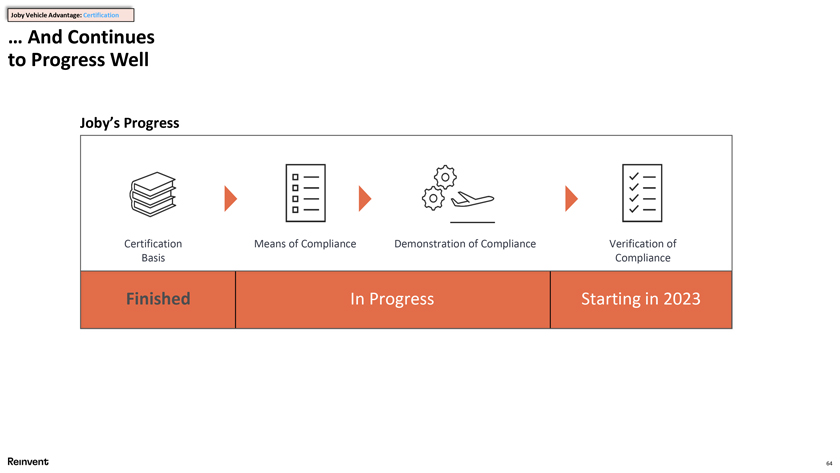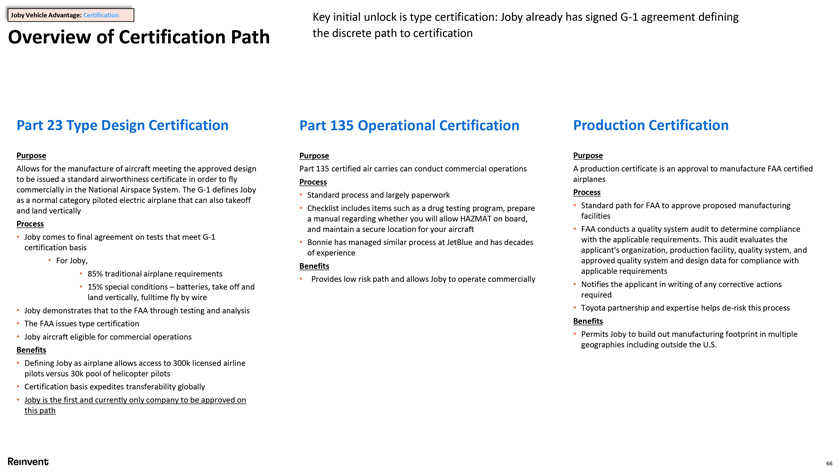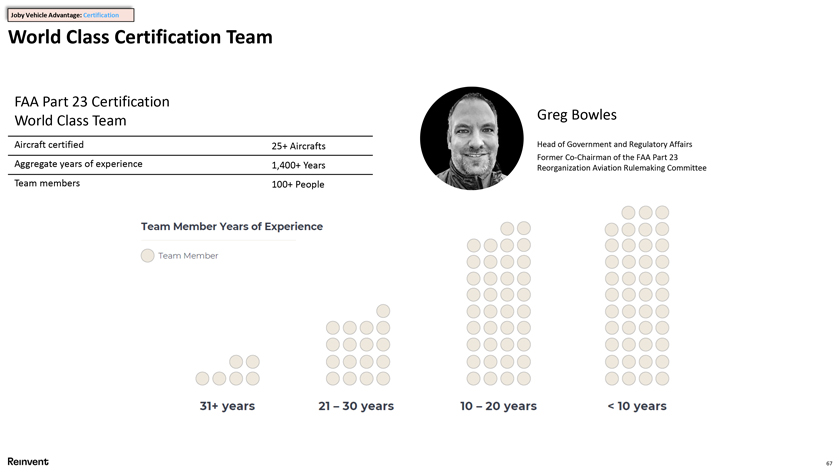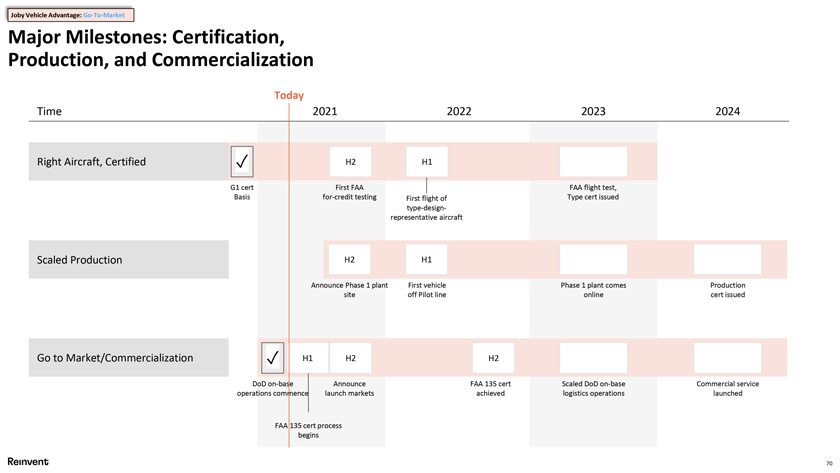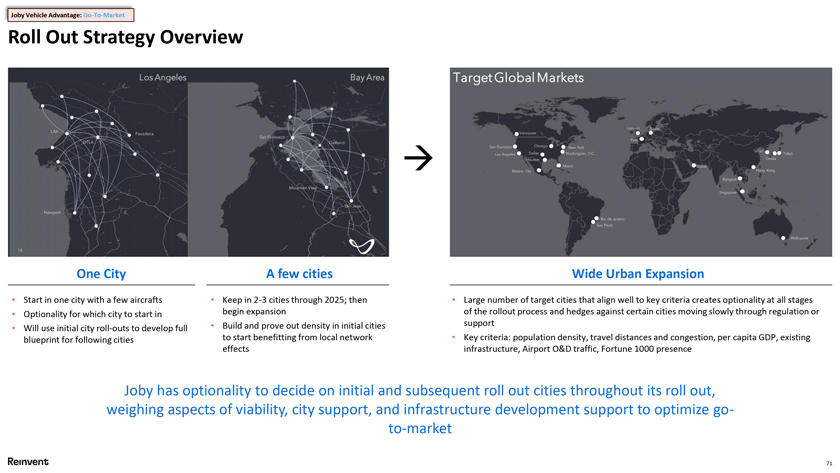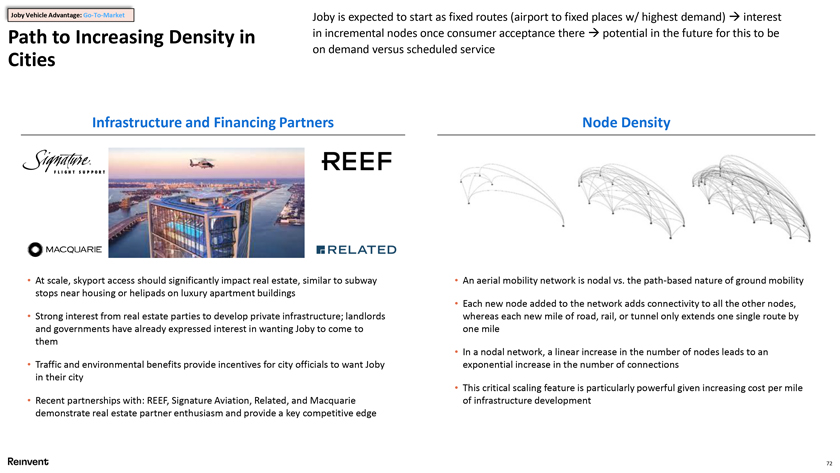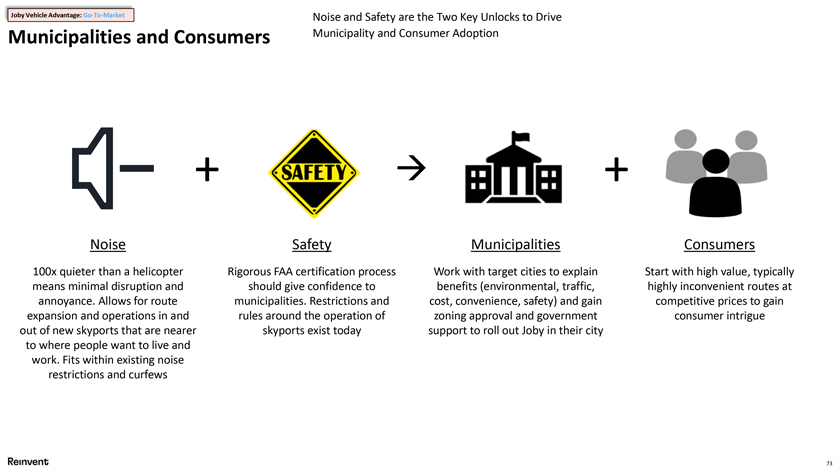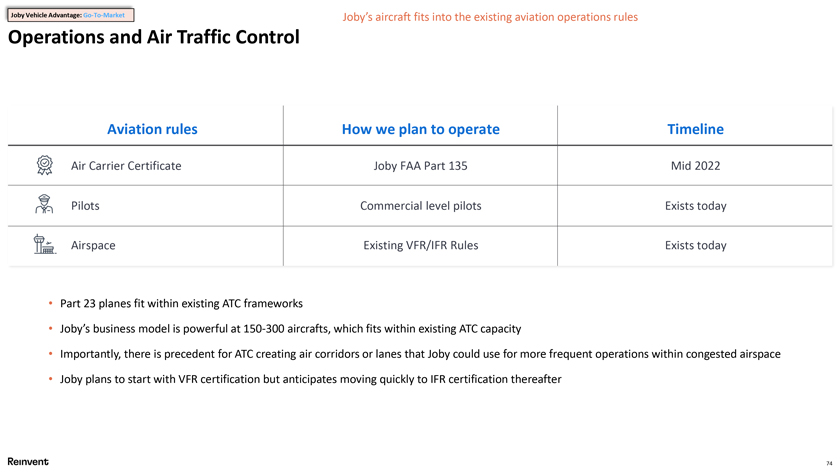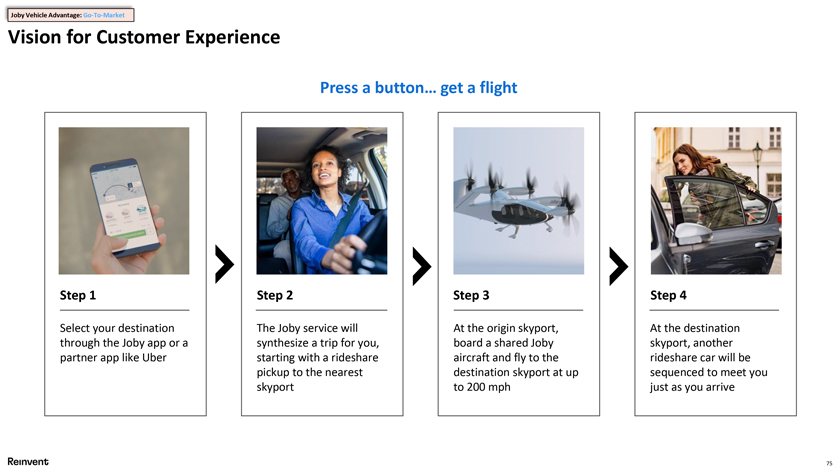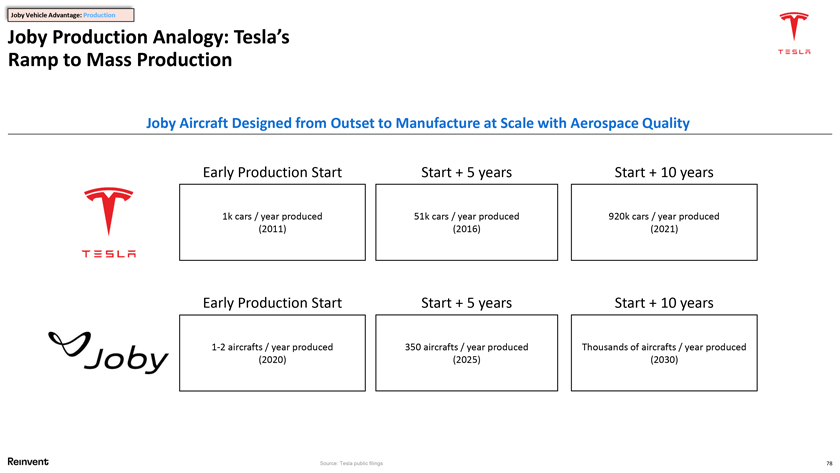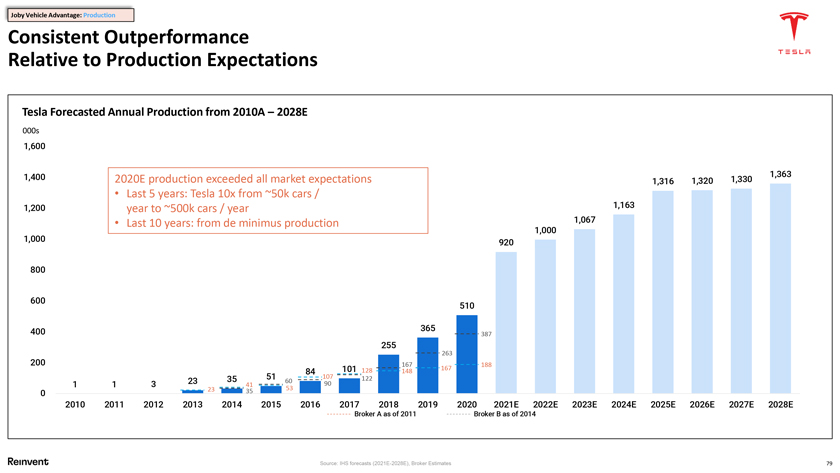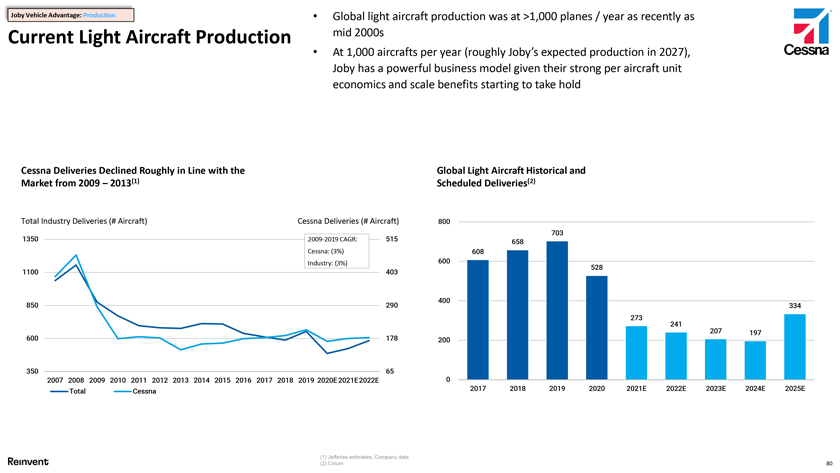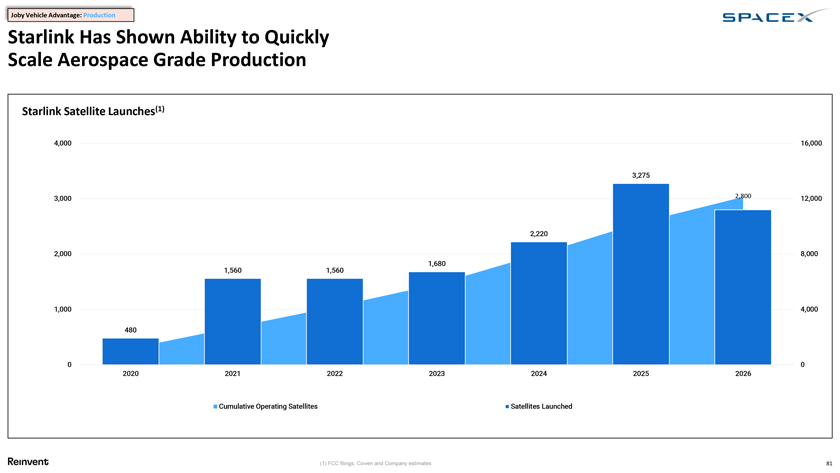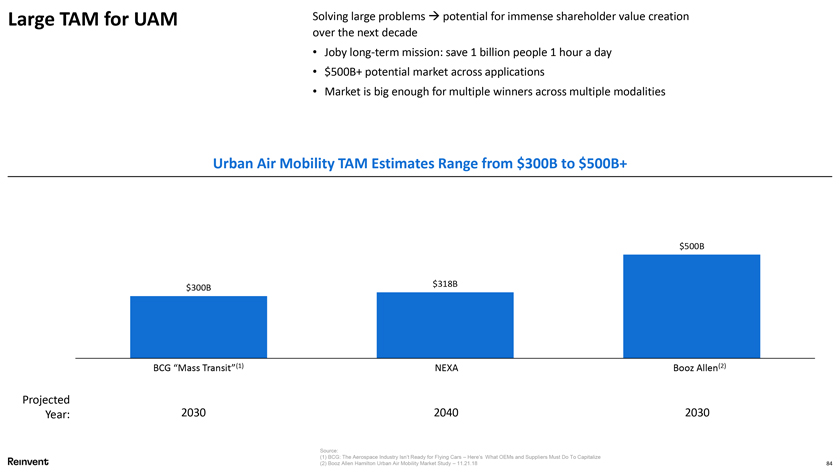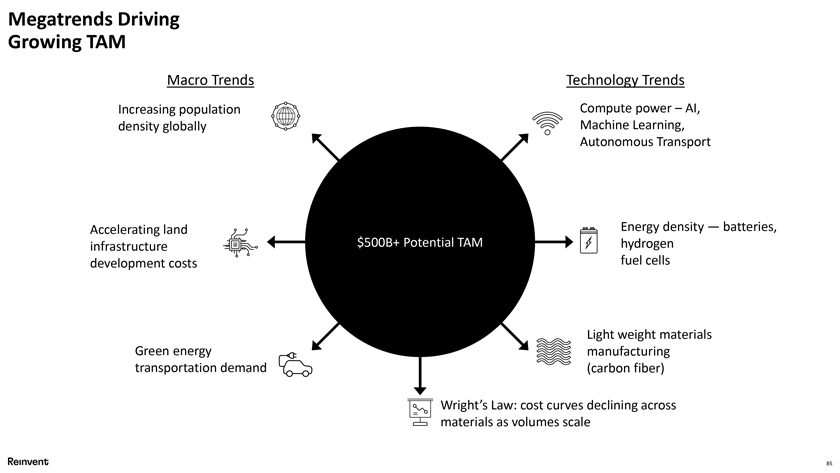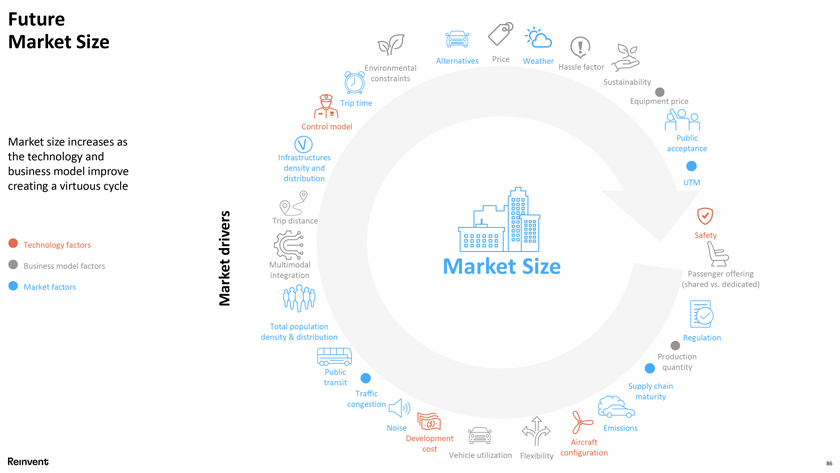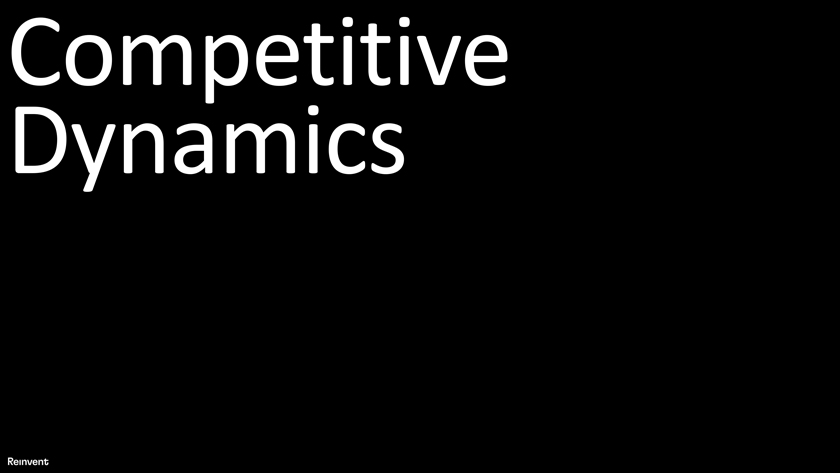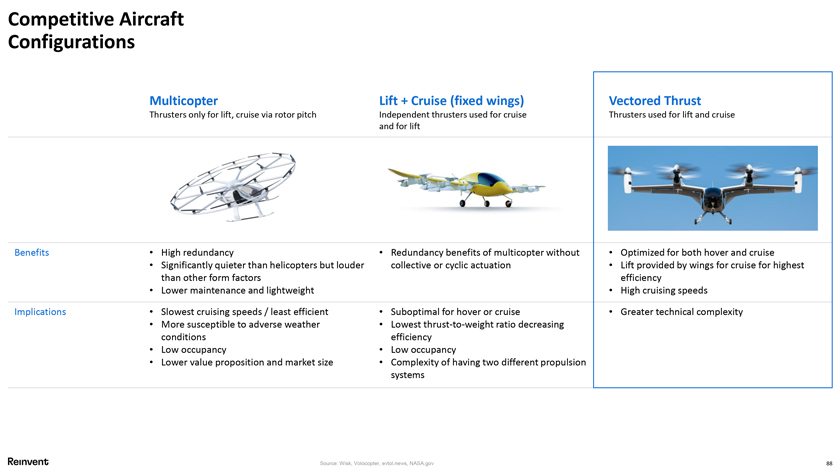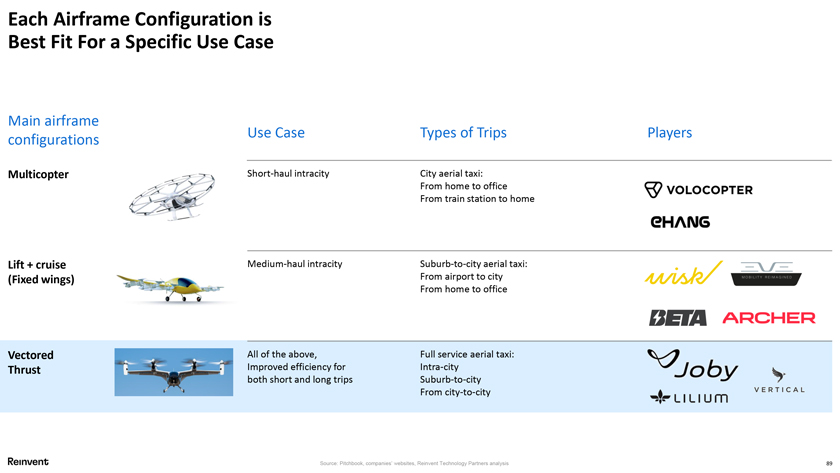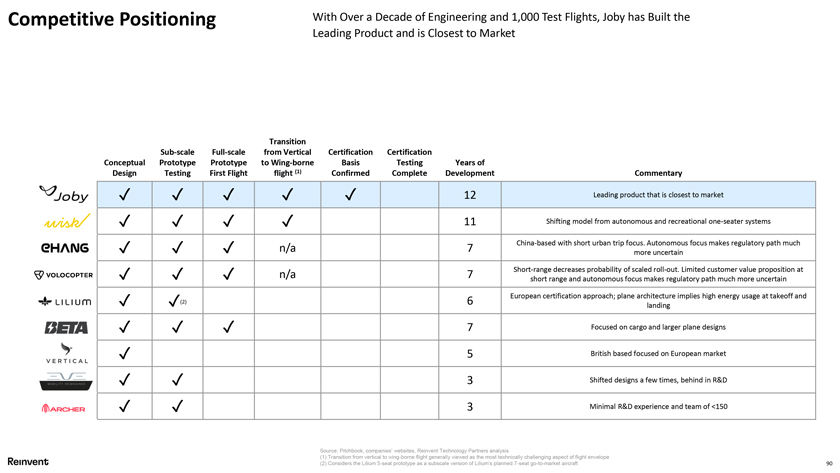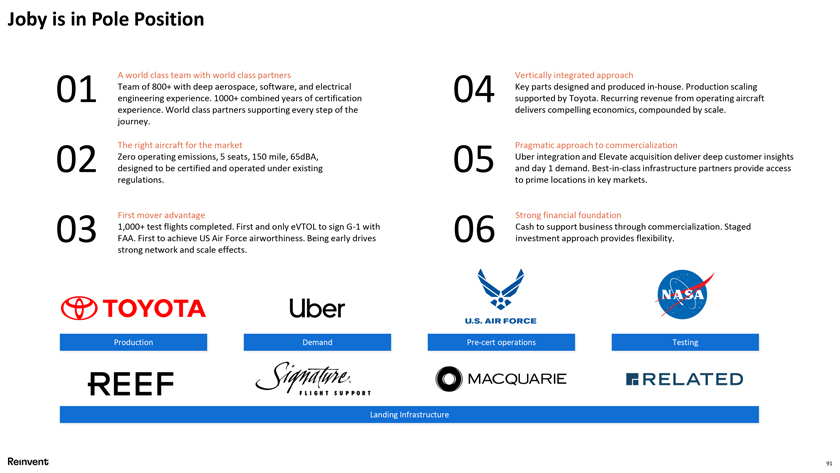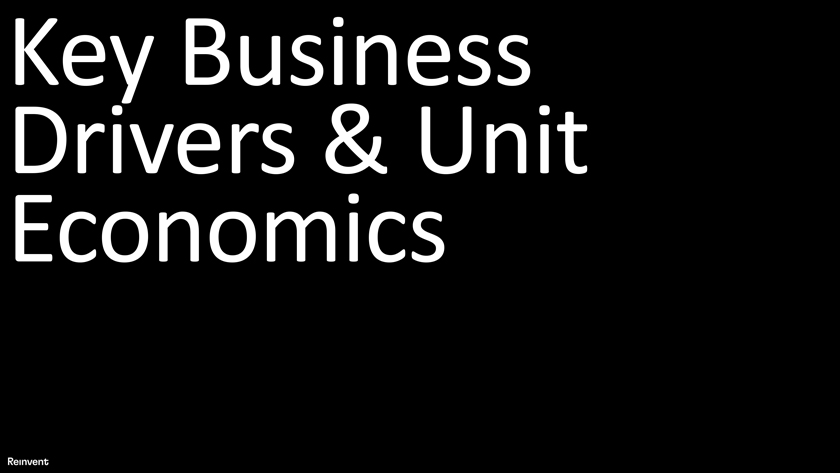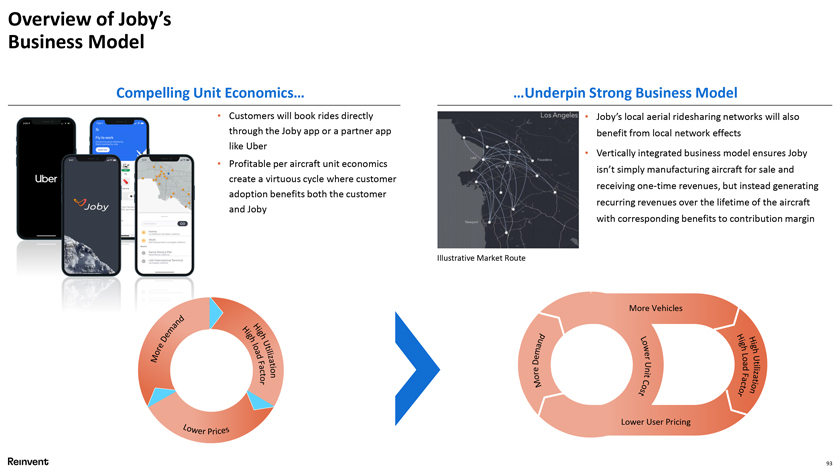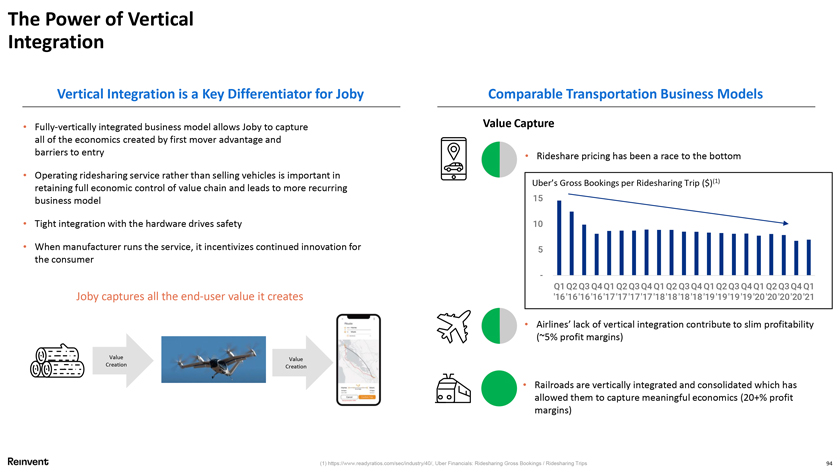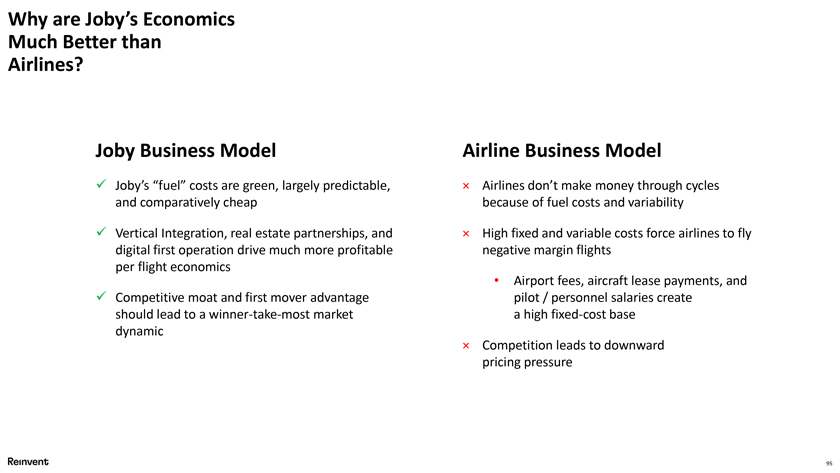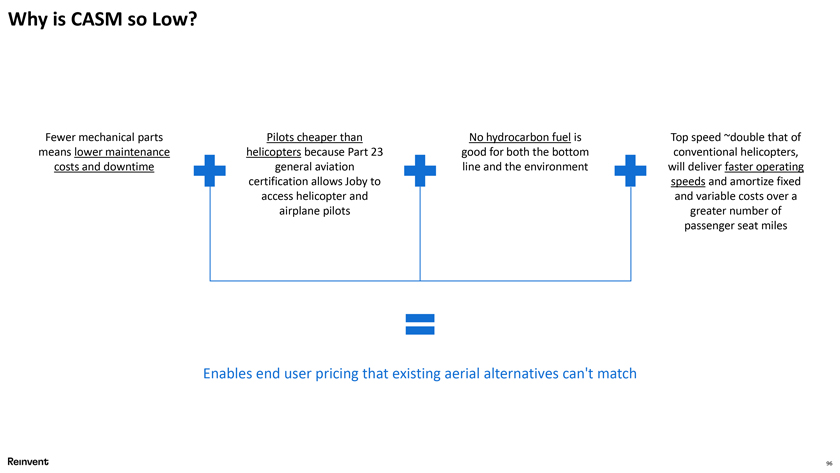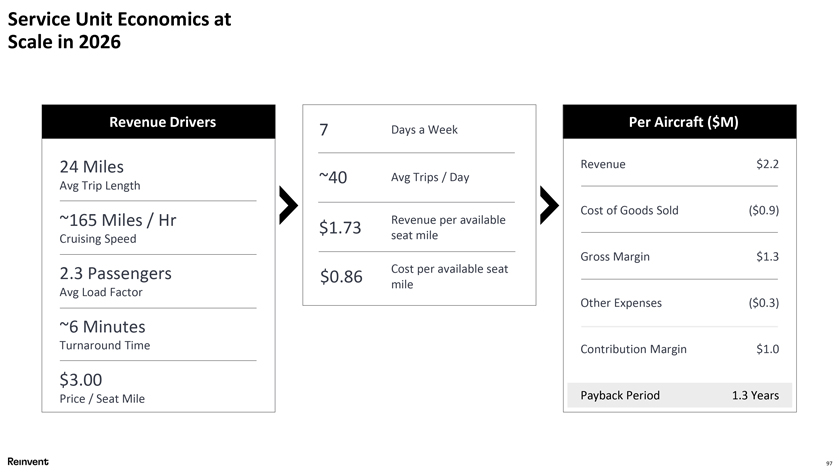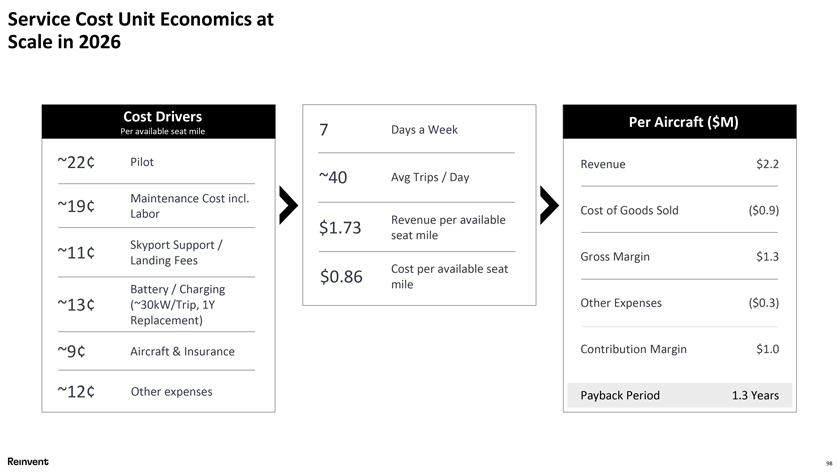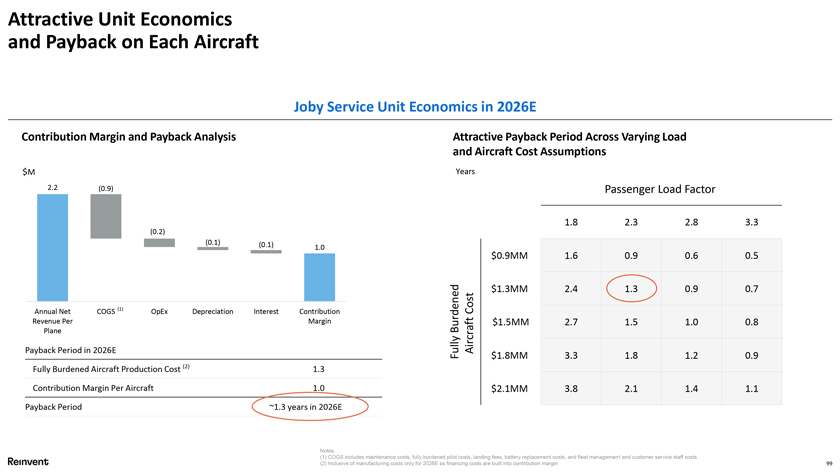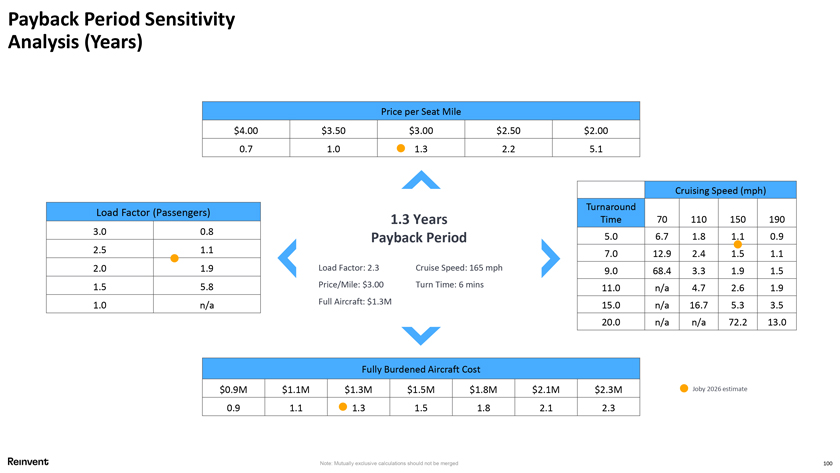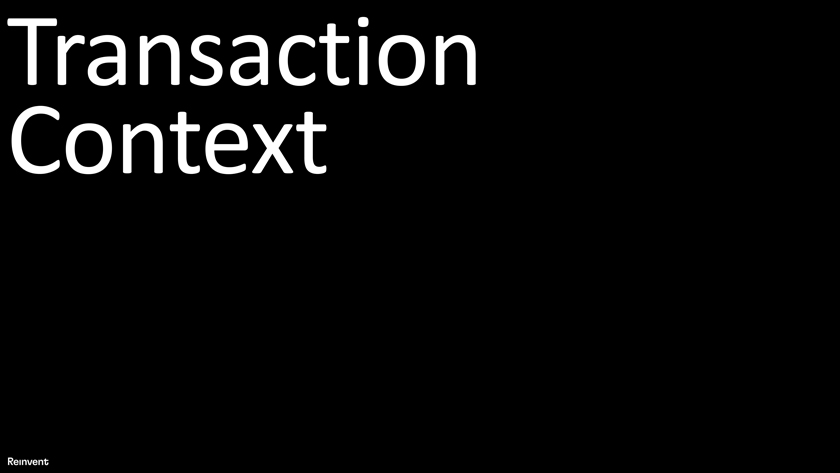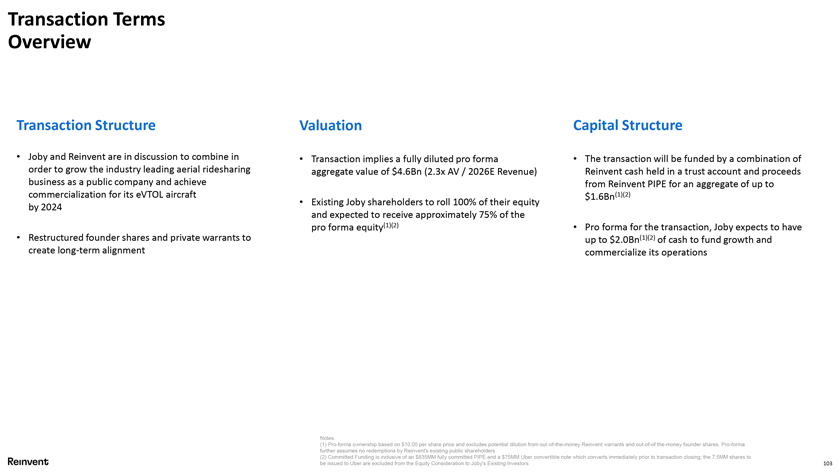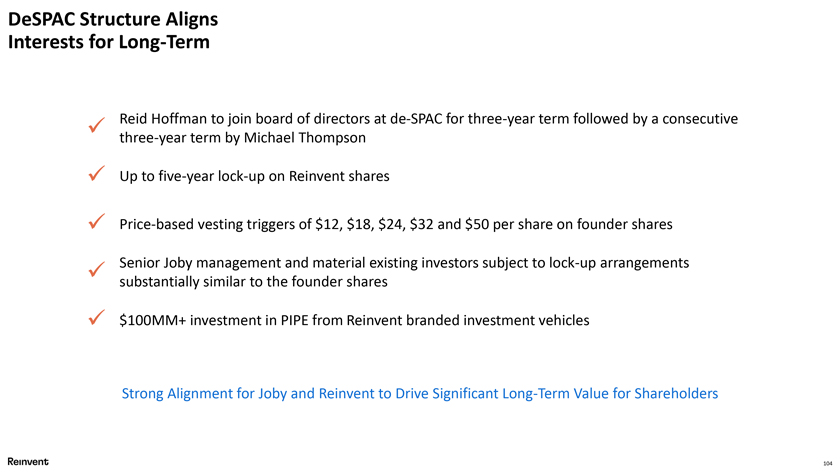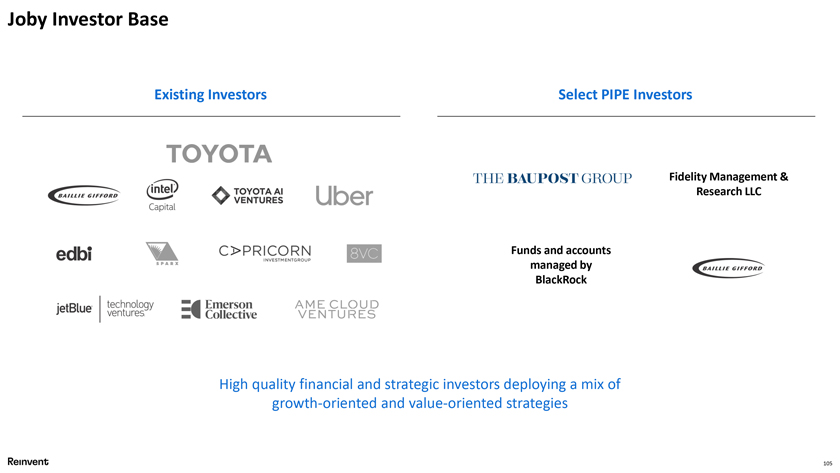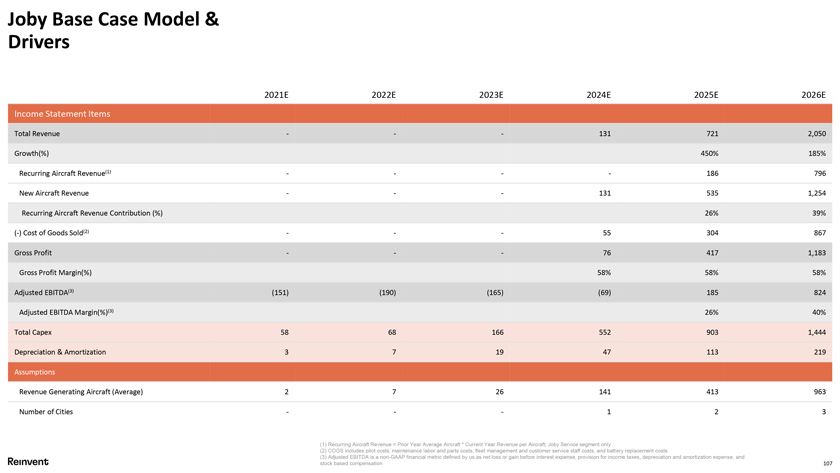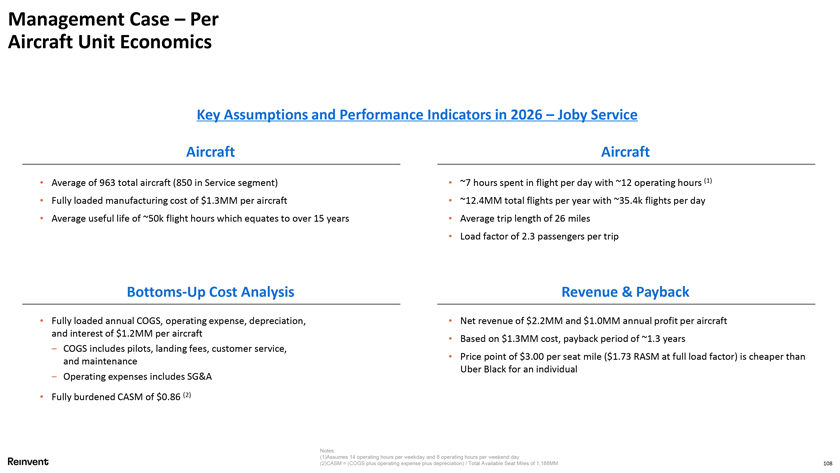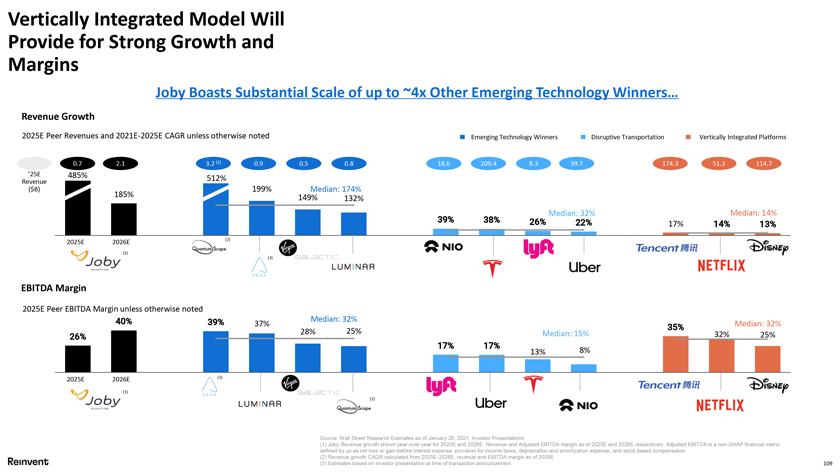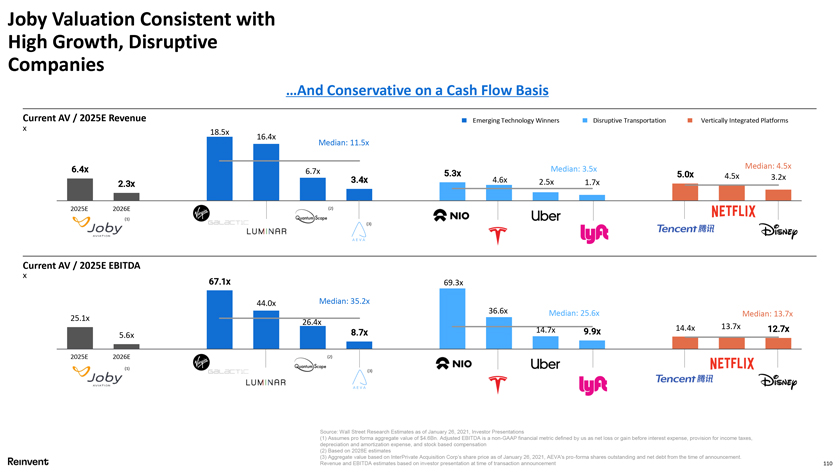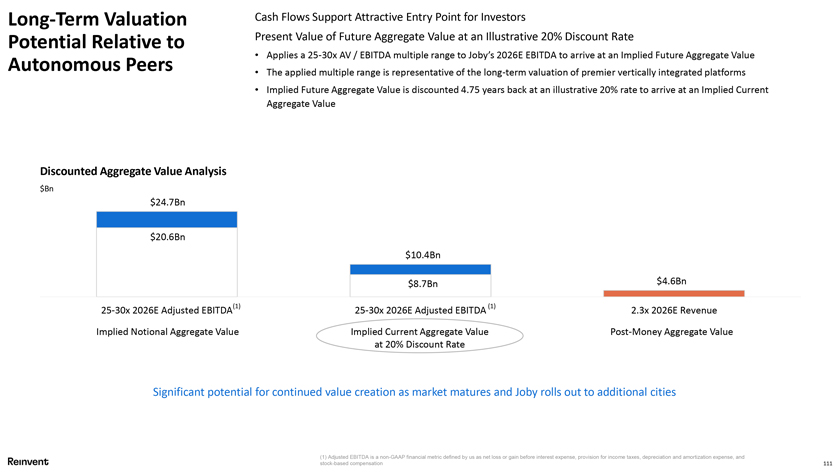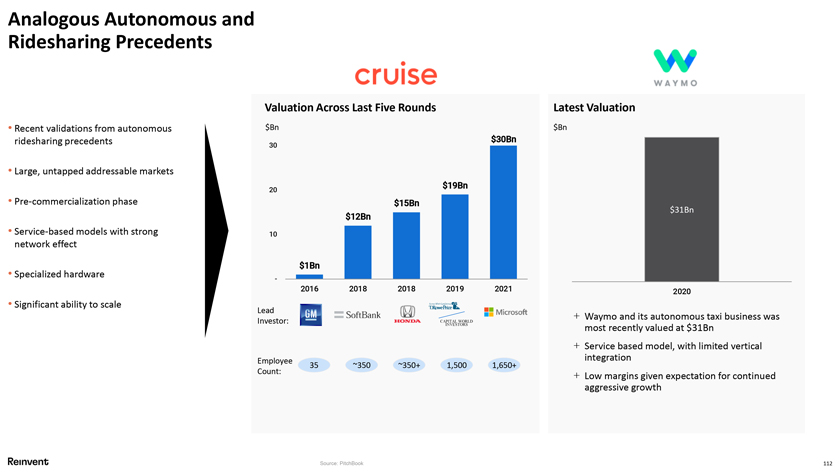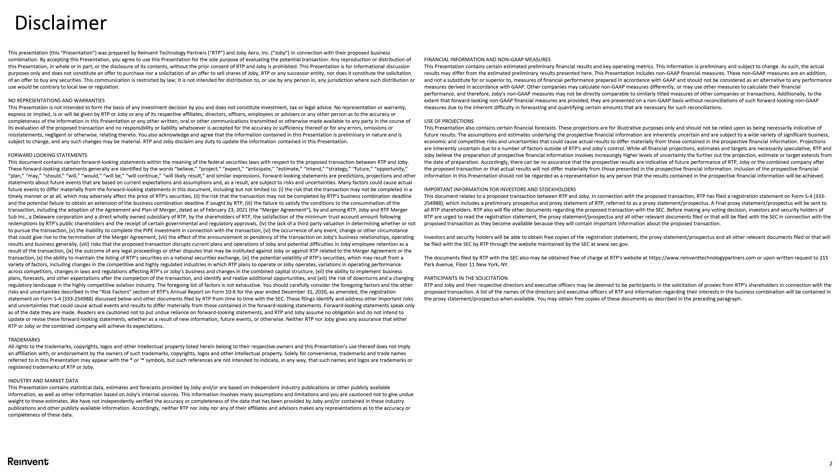
Disclaimer This presentation (this “Presentation”) was prepared by Reinvent Technology Partners
(“RTP”) and Joby Aero, Inc. (“Joby”) in connection with their proposed business combination. By accepting this Presentation, you agree to use this Presentation for the sole purpose of evaluating the potential transaction. Any
reproduction or distribution of FINANCIAL INFORMATION AND NON-GAAP MEASURES this Presentation, in whole or in part, or the disclosure of its contents, without the prior consent of RTP and Joby is prohibited.
This Presentation is for informational discussion This Presentation contains certain estimated preliminary financial results and key operating metrics. This information is preliminary and subject to change. As such, the actual purposes only and does
not constitute an offer to purchase nor a solicitation of an offer to sell shares of Joby, RTP or any successor entity, nor does it constitute the solicitation results may differ from the estimated preliminary results presented here. This
Presentation includes non-GAAP financial measures. These non-GAAP measures are an addition, of an offer to buy any securities. This communication is restricted by law;
it is not intended for distribution to, or use by any person in, any jurisdiction where such distribution or and not a substitute for or superior to, measures of financial performance prepared in accordance with GAAP and should not be considered as
an alternative to any performance use would be contrary to local law or regulation. measures derived in accordance with GAAP. Other companies may calculate non-GAAP measures differently, or may use other
measures to calculate their financial performance, and therefore, Joby’s non-GAAP measures may not be directly comparable to similarly titled measures of other companies or transactions. Additionally, to
the NO REPRESENTATIONS AND WARRANTIES extent that forward-looking non-GAAP financial measures are provided, they are presented on a non-GAAP basis without
reconciliations of such forward-looking non-GAAP This Presentation is not intended to form the basis of any investment decision by you and does not constitute investment, tax or legal advice. No representation
or warranty, measures due to the inherent difficulty in forecasting and quantifying certain amounts that are necessary for such reconciliations. express or implied, is or will be given by RTP or Joby or any of its respective affiliates, directors,
officers, employees or advisers or any other person as to the accuracy or completeness of the information in this Presentation or any other written, oral or other communications transmitted or otherwise made available to any party in the course of
USE OF PROJECTIONS its evaluation of the proposed transaction and no responsibility or liability whatsoever is accepted for the accuracy or sufficiency thereof or for any errors, omissions or This Presentation also contains certain financial
forecasts. These projections are for illustrative purposes only and should not be relied upon as being necessarily indicative of misstatements, negligent or otherwise, relating thereto. You also acknowledge and agree that the information contained
in this Presentation is preliminary in nature and is future results. The assumptions and estimates underlying the prospective financial information are inherently uncertain and are subject to a wide variety of significant business, subject to
change, and any such changes may be material. RTP and Joby disclaim any duty to update the information contained in this Presentation. economic and competitive risks and uncertainties that could cause actual results to differ materially from those
contained in the prospective financial information. Projections are inherently uncertain due to a number of factors outside of RTP’s and Joby’s control. While all financial projections, estimates and targets are necessarily speculative,
RTP and FORWARD LOOKING STATEMENTS Joby believe the preparation of prospective financial information involves increasingly higher levels of uncertainty the further out the projection, estimate or target extends from This document contains certain
forward-looking statements within the meaning of the federal securities laws with respect to the proposed transaction between RTP and Joby. the date of preparation. Accordingly, there can be no assurance that the prospective results are indicative
of future performance of RTP, Joby or the combined company after These forward-looking statements generally are identified by the words “believe,” “project,” “expect,” “anticipate,” “estimate,”
“intend,” “strategy,” “future,” “opportunity,” the proposed transaction or that actual results will not differ materially from those presented in the prospective financial information. Inclusion of the
prospective financial “plan,” “may,” “should,” “will,” “would,” “will be,” “will continue,” “will likely result,” and similar expressions. Forward-looking statements are
predictions, projections and other information in this Presentation should not be regarded as a representation by any person that the results contained in the prospective financial information will be achieved. statements about future events that
are based on current expectations and assumptions and, as a result, are subject to risks and uncertainties. Many factors could cause actual future events to differ materially from the forward-looking statements in this document, including but not
limited to: (i) the risk that the transaction may not be completed in a IMPORTANT INFORMATION FOR INVESTORS AND STOCKHOLDERS timely manner or at all, which may adversely affect the price of RTP’s securities, (ii) the risk that the
transaction may not be completed by RTP’s business combination deadline This document relates to a proposed transaction between RTP and Joby. In connection with the proposed transaction, RTP has filed a registration statement on Form S-4 (333-and the potential failure to obtain an extension of the business combination deadline if sought by RTP, (iii) the failure to satisfy the conditions to the
consummation of the 254988), which includes a preliminary prospectus and proxy statement of RTP, referred to as a proxy statement/prospectus. A final proxy statement/prospectus will be sent to transaction, including the adoption of the Agreement and
Plan of Merger, dated as of February 23, 2021 (the “Merger Agreement”), by and among RTP, Joby and RTP Merger all RTP shareholders. RTP also will file other documents regarding the proposed transaction with the SEC. Before making any
voting decision, investors and security holders of Sub Inc., a Delaware corporation and a direct wholly owned subsidiary of RTP, by the shareholders of RTP, the satisfaction of the minimum trust account amount following RTP are urged to read the
registration statement, the proxy statement/prospectus and all other relevant documents filed or that will be filed with the SEC in connection with the redemptions by RTP’s public shareholders and the receipt of certain governmental and
regulatory approvals, (iv) the lack of a third party valuation in determining whether or not proposed transaction as they become available because they will contain important information about the proposed transaction. to pursue the
transaction, (v) the inability to complete the PIPE investment in connection with the transaction, (vi) the occurrence of any event, change or other circumstance that could give rise to the termination of the Merger Agreement,
(vii) the effect of the announcement or pendency of the transaction on Joby’s business relationships, operating Investors and security holders will be able to obtain free copies of the registration statement, the proxy statement/prospectus
and all other relevant documents filed or that will results and business generally, (viii) risks that the proposed transaction disrupts current plans and operations of Joby and potential difficulties in Joby employee retention as a be filed
with the SEC by RTP through the website maintained by the SEC at www.sec.gov. result of the transaction, (ix) the outcome of any legal proceedings or other disputes that may be instituted against Joby or against RTP related to the Merger
Agreement or the transaction, (x) the ability to maintain the listing of RTP’s securities on a national securities exchange, (xi) the potential volatility of RTP’s securities, which may result from a The documents filed by RTP
with the SEC also may be obtained free of charge at RTP’s website at https://www.reinventtechnologypartners.com or upon written request to 215 variety of factors, including changes in the competitive and highly regulated industries in which RTP
plans to operate or Joby operates, variations in operating performance Park Avenue, Floor 11 New York, NY. across competitors, changes in laws and regulations affecting RTP’s or Joby’s business and changes in the combined capital
structure, (xii) the ability to implement business plans, forecasts, and other expectations after the completion of the transaction, and identify and realize additional opportunities, and (xiii) the risk of downturns and a changing
PARTICIPANTS IN THE SOLICITATION regulatory landscape in the highly competitive aviation industry. The foregoing list of factors is not exhaustive. You should carefully consider the foregoing factors and the other RTP and Joby and their respective
directors and executive officers may be deemed to be participants in the solicitation of proxies from RTP’s shareholders in connection with the risks and uncertainties described in the “Risk Factors” section of RTP’s Annual
Report on Form 10-K for the year ended December 31, 2020, as amended, the registration proposed transaction. A list of the names of the directors and executive officers of RTP and information regarding
their interests in the business combination will be contained in statement on Form S-4 (333-254988) discussed below and other documents filed by RTP from time to time
with the SEC. These filings identify and address other important risks the proxy statement/prospectus when available. You may obtain free copies of these documents as described in the preceding paragraph. and uncertainties that could cause actual
events and results to differ materially from those contained in the forward-looking statements. Forward-looking statements speak only as of the date they are made. Readers are cautioned not to put undue reliance on forward-looking statements, and
RTP and Joby assume no obligation and do not intend to update or revise these forward-looking statements, whether as a result of new information, future events, or otherwise. Neither RTP nor Joby gives any assurance that either RTP or Joby or the
combined company will achieve its expectations. TRADEMARKS All rights to the trademarks, copyrights, logos and other intellectual property listed herein belong to their respective owners and this Presentation’s use thereof does not imply an
affiliation with, or endorsement by the owners of such trademarks, copyrights, logos and other intellectual property. Solely for convenience, trademarks and trade names referred to in this Presentation may appear with the ® or ™ symbols,
but such references are not intended to indicate, in any way, that such names and logos are trademarks or registered trademarks of RTP or Joby. INDUSTRY AND MARKET DATA This Presentation contains statistical data, estimates and forecasts provided by
Joby and/or are based on independent industry publications or other publicly available information, as well as other information based on Joby’s internal sources. This information involves many assumptions and limitations and you are cautioned
not to give undue weight to these estimates. We have not independently verified the accuracy or completeness of the data that has been provided by Joby and/or contained in these industry publications and other publicly available information.
Accordingly, neither RTP nor Joby nor any of their affiliates and advisors makes any representations as to the accuracy or completeness of these data. 2
